Illustration vs. Fine Art: Unpacking the Differences (and Why It Matters to Me)
Ever wondered about the real distinction between illustration and fine art? Join me as I explore their unique purposes, contexts, and why these labels, though often blurry, shape the art world – and my own creative journey.
# Illustration vs. Fine Art: An Educational Overview of Distinctions and Overlaps
You know, for a long time, I felt caught between these two worlds myself – illustration and fine art. It's like being a painter trying to decide if their canvas was meant for a gallery wall or a book cover. It's a journey, isn't it? Trying to find where your heart truly lies in the grand scheme of creativity. But what if we saw them less as rigid categories and more as different lenses through which to view the vast, sparkling universe of art? That's what I've learned to do, and it's made my own creative journey so much richer. Come on, let's explore this beautiful dance between purpose and passion, and see where our own art might land on the spectrum. This article isn't just an authoritative overview of distinctions and overlaps; it's an exploration that has led me to question the very foundations of artistic classification, pushing me to reconsider how intent, context, and reception truly delineate these often-intertwined practices. Perhaps, at its heart, art is simply a profound act of communication, and it's our job as creators and viewers to discern the many dialects it speaks.
Sometimes I sit in my studio, surrounded by paint splatters and half-finished canvases, and I think about labels. 'Artist' is a pretty broad one, isn't it? But then you start hearing terms like **illustration** and **fine art**, and suddenly it feels like you're trying to categorize clouds – they're both in the sky, they both float, but one might be a fluffy sheep and the other a stormy dragon. It can be confusing, even for someone knee-deep in the creative world like me.
I mean, on the surface, they both involve creating visuals, right? Using skill, imagination, and often similar materials to make something beautiful or thought-provoking. But for someone like me, who lives and breathes art, digging a little deeper reveals that the intentions behind them start to diverge quite dramatically. It’s not about ranking one above the other, but about truly appreciating the incredible spectrum of human creative drive. Let’s unpack this together, because understanding these distinctions has really helped me [find my voice: the evolution of my abstract artistic style](/finder/page/finding-my-voice:-the-evolution-of-my-abstract-artistic-style) and embrace the vast, wonderfully messy landscape of creativity out there. It’s shown me that there's room for every kind of artistic expression, and that's a revelation worth exploring.
***
## The Heart of It: Purpose and Intention
This is where the real fork in the road appears. For me, it boils down to *why* the art is being made in the first place.
### Illustration: The Storyteller with a Mission
When I think of illustration, I imagine someone sitting down with a clear brief, a specific message to convey, or a story to tell. It's often **client-driven** and has a **defined purpose**. Think about the vibrant images in a children's book that bring characters to life, the crystal-clear infographic explaining a complex scientific idea, the intricate character design for a blockbuster video game, or even the eye-catching packaging on your favorite snack that practically screams "buy me!". It's all about making a message sing, visually. I remember once trying my hand at a concept for a book cover – it was exhilarating to think about how my art would guide someone's expectation of the story inside, almost like being a visual co-author. Or consider the intricate editorial illustrations gracing the pages of a magazine, the dynamic visual identity of a brand, the compelling storyboards for a film, or the captivating concept art that shapes entire cinematic universes and video games. These aren't just pretty pictures; they're powerful communication tools, each crafted with a specific intent to engage, inform, or persuade, often operating within strict thematic or stylistic guidelines. Illustrators are adept at visual problem-solving, translating complex ideas into easily digestible and aesthetically pleasing forms for a diverse array of media. Consider the medical illustrator, meticulously detailing human anatomy for textbooks, or the architectural renderer, bringing a building concept to vibrant life before construction even begins. Then there are the expansive worlds of sequential art – from the intricate paneling of graphic novels to the dynamic character sheets for animated films – all forms of illustration dedicated to conveying specific narratives and information. Each requires a unique blend of artistic skill and communicative precision, demonstrating the incredible breadth of the illustrator's role in our visually-driven world, from scientific and technical diagrams to fashion sketches and compelling editorial pieces. And don't forget the captivating realm of **fashion illustration**, where garments come to life on paper, or the intricate **packaging design** that makes a product leap off the shelf. There's also the impactful world of **editorial illustration**, where images clarify complex news stories, and the immersive craft of **concept art** for video games and films, laying the visual groundwork for entire fictional universes. Beyond these, consider **children's book illustration**, where magical worlds are brought to life for young readers, or **technical illustration**, which provides clear diagrams for assembly instructions or scientific manuals. It’s truly a testament to how many different stories can be told with a single image, and how many problems can be solved with a well-placed line or splash of color.
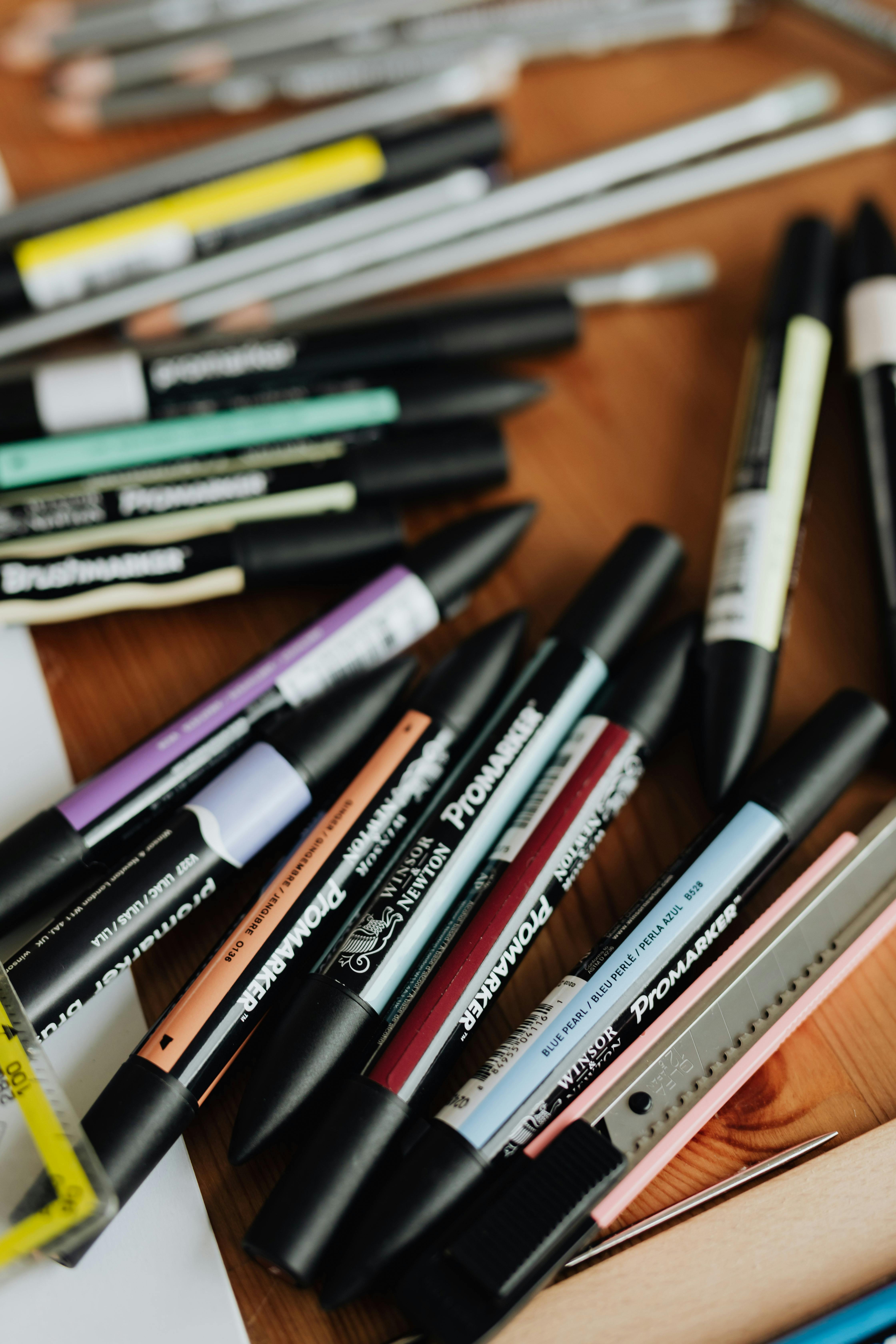
[credit](https://images.pexels.com/photos/4219132/pexels-photo-4219132.jpeg), [licence](https://creativecommons.org/public-domain/)
An illustrator's job is to translate a concept into a visual form that serves a particular function. They're solving a visual problem, whether it's making a product appealing, clarifying text, or creating an atmosphere for a narrative. There's a certain joy in that, I think – being part of a larger project and knowing your visuals are helping communicate something specific to a particular audience. It's very much about communication and often, **commerciality**.
It’s a different kind of challenge, one where your creativity is harnessed to a specific outcome, like a visual architect building a bridge to a message. And that can be incredibly satisfying, knowing your art has a direct, measurable impact in the world, whether it's helping a small business sell its product or helping a non-profit convey a critical social issue.
### Fine Art: The Inner Voice Made Visible
Now, fine art, that's a different beast altogether. This is where the artist's **autonomy** truly takes center stage. The primary driver here isn't a client brief or a specific message to be delivered on demand, but rather the artist's **autonomy** and profound **self-expression**, an unyielding exploration of ideas, emotions, or aesthetic principles for their own sake. It's about what the artist wants to say, how they want to explore a concept, or simply the pure, unadulterated joy of creation. I often think of my own work, especially my abstract pieces, as a direct output of my inner world – a reflection of feelings, experiences, and observations, rather than a response to an external prompt. It’s an ongoing conversation with myself, in a way, seeking to uncover [the meaning of art](/finder/page/what-is-the-meaning-of-art) through my own hands, driven by an almost primal urge to manifest the intangible. This emphasis on conceptual depth extends to various movements, from the raw emotionality of Abstract Expressionism to the intellectual rigor of Conceptual Art, where the idea itself takes precedence over the physical artifact, often delving into existentialism or phenomenology. But it doesn't stop there. Think about the playful subversion of **Pop Art** challenging consumer culture, or the visceral body-based explorations of **Performance Art**. Each movement, in its own way, is trying to unravel a different knot of human experience, of existence itself. If you're curious about these profound shifts and how artists have continually pushed the boundaries of what art *is*, exploring [the ultimate guide to abstract art movements: from early pioneers to contemporary trends](/finder/page/the-ultimate-guide-to-abstract-art-movements-from-early-pioneers-to-contemporary-trends) might offer some fascinating insights. It's like watching a grand, ongoing debate, played out with paint and sculptures instead of words, asking us to constantly question and re-evaluate our reality.

[credit](https://images.pexels.com/photos/15841465/pexels-photo-15841465/free-photo-of-texture-of-palette-in-paint.jpeg), [licence](https://creativecommons.org/public-domain/)
Fine art, to me, is about creating something that stands alone, inviting interpretation and emotional connection without a predetermined instruction manual. It's art for art's sake, if you will, or at least art for the sake of the artist's personal vision and inner imperative. The concept of 'art for art's sake' (or *l'art pour l'art*) gained significant traction in the 19th century, particularly with movements like Aestheticism, which championed the idea that art needed no moral, didactic, or utilitarian justification. It was a radical idea at the time, liberating art from its traditional roles and emphasizing its intrinsic beauty and expressive power above all else. It's that raw, unfiltered moment when you're just *making*, responding to an internal muse, letting the brush or the medium guide you to a discovery. I often lose myself in the process, not knowing where the piece will end up, but trusting that it's an authentic reflection of a feeling or an idea, an almost spiritual communion with the canvas. If you're curious about this side, about letting go and letting the art lead, you might enjoy exploring [my creative flow: embracing intuition in abstract painting](/finder/page/my-creative-flow:-embracing-intuition-in-abstract-painting) and [why I paint abstract: my personal philosophy and artistic vision](/finder/page/why-i-paint-abstract:-my-personal-philosophy-and-artistic-vision).
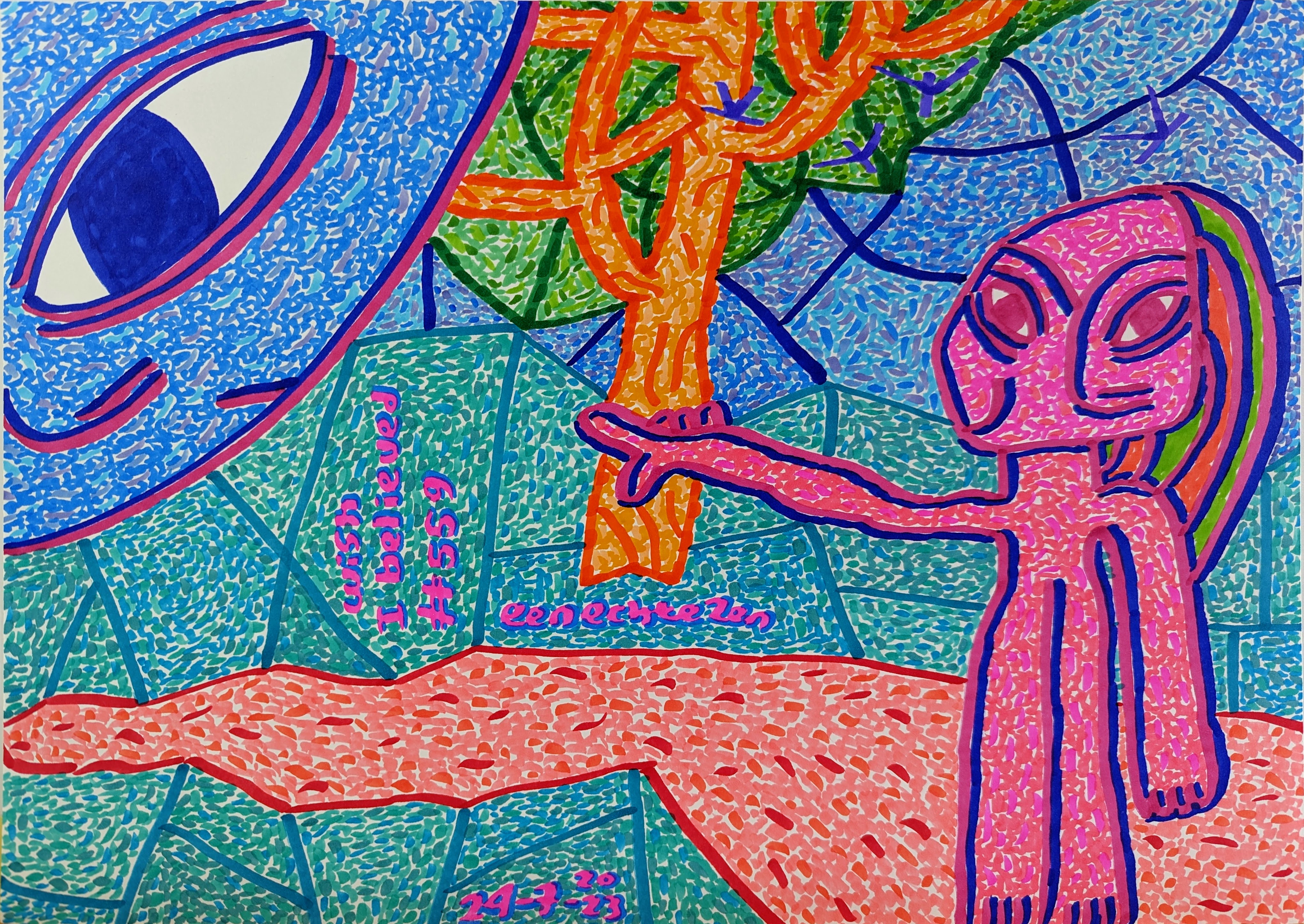
[credit](https://images.zenmuseum.com/art/559/picture.jpg), [licence](https://creativecommons.org/public-domain/)
It’s this internal journey, this intimate dialogue between creator and creation, that often defines the essence of fine art. It’s not about explaining, but about evoking; not about instructing, but about inviting. This emphasis on conceptual depth extends to various movements, from the raw emotionality of Abstract Expressionism to the intellectual rigor of Conceptual Art, where the idea itself takes precedence over the physical artifact. It’s about more than just looking pretty; it's about pushing boundaries, questioning reality, and sometimes, even confronting uncomfortable truths about ourselves and society. Fine art frequently challenges societal norms, provokes thought, and offers new perspectives on the human condition, seeking to transcend mere aesthetics to achieve profound philosophical or emotional resonance, often delving into existentialism or phenomenology. Movements like Dadaism, with its deliberate embrace of the absurd and illogical, or Surrealism, which delved into the subconscious, explicitly sought to disrupt conventional thought and challenge the very definition of art. And let me tell you, sometimes sitting with a piece that makes you question everything is far more rewarding than something that just confirms what you already believe. It's like a good philosophical debate, but with paint instead of words.
And that, I think, is a beautiful and often profound difference.
***
## The Spectator's Gaze: How We Engage
This is where things get really personal for the viewer. When I look at a piece of art, whether it's an illustration or a fine art creation, my experience is shaped by what I expect from it, and often, by what the artist intended. It's like listening to music – sometimes you want a catchy pop song to dance to (illustration!), and sometimes you want a complex symphony that moves you deeply (fine art!). Both are valid, both are powerful, but they ask different things from us. It’s a fascinating cognitive dance, really, how our brains process visual information and layer it with our own memories, biases, and cultural understandings. What one person sees as a simple line, another might see as a profound gesture.
#### The Psychology of Visual Reception
You know, it's a fascinating cognitive dance, really, how our brains process visual information and layer it with our own memories, biases, and cultural understandings. What one person sees as a simple line, another might see as a profound gesture. Understanding this subtle interplay is crucial to appreciating both illustration and fine art. Our brains are constantly making sense of the world, filling in gaps, and drawing connections based on everything we've experienced. For illustration, this often means tapping into shared cultural symbols and universal archetypes to ensure a message is immediately grasped. But for fine art, it might involve deliberately disrupting those expectations, forcing a pause, and inviting a more profound, personal psychological journey. It's a testament to the sheer power of visual language, isn't it? How a simple image can unlock a flood of thoughts and emotions within us.

[credit](https://upload.wikimedia.org/wikipedia/commons/1/12/Printing_Using_a_Linocut_Design.jpg),
[licence](https://creativecommons.org/licenses/by-sa/3.0){"alt_en": "Abstract art with vibrant splashes of red, blue, yellow, and green paint on weathered wood panels, suggesting a messy artist's workspace, inviting personal interpretation from the viewer.", "alt_nl": "Abstracte kunst met levendige spatten rood, blauw, geel en groene verf op verweerde houten panelen, wat een rommelige kunstenaarswerkplek suggereert, en persoonlijke interpretatie van de kijker uitnodigt."}
[credit](https://www.publicdomainpictures.net/pictures/250000/nahled/messy-colorful-artists-palette.jpg), [licence](https://creativecommons.org/publicdomain/zero/1.0/)
### Illustration: Clear Directions, Shared Understanding
With illustration, I find there's often a more direct line of communication. The visual elements are usually designed to be understood quickly, to convey information, or to evoke a specific emotion tied to a text or product. It's like a good map – clear, concise, and guiding you to a destination. The beauty is in its effectiveness, its ability to enhance a story or clarify a concept without much ambiguity. As a viewer, I'm often looking for that 'aha!' moment of recognition, that clear message being delivered. It's a shared understanding between the creator and the audience, orchestrated by the client's brief. It feels almost like a well-structured conversation, where the artist is speaking directly to you, and you're nodding along, absorbing the visual narrative. The success of an illustration is often measurable by how effectively its message is received and acted upon, whether it's the clarity of an instructional diagram or the emotional pull of a character design. This directness fosters a sense of immediate connection, guiding the viewer through a pre-defined visual experience. For me, the magic of a good illustration is how it anticipates what the viewer needs to understand or feel, and then delivers it with precision and grace. It's almost an act of empathy, really, understanding the audience's need and fulfilling it visually. This engagement can be deeply psychological, tapping into universal symbols and archetypes to create an immediate, intuitive understanding. For example, a compelling character design in a video game might evoke empathy or excitement before a single word of dialogue is spoken, demonstrating the profound pre-verbal power of illustration. This capacity to communicate complex ideas or emotions pre-verbally is a hallmark of strong illustration, bridging cultural and linguistic divides with universal visual cues.
### Fine Art: Open Invitation, Personal Voyage
#### The Dance of Interpretation: Accessibility vs. Elitism
This distinction also touches on something a bit trickier: accessibility. Historically, fine art has sometimes been seen as exclusive, living in hushed galleries and understood by a select few. Illustration, on the other hand, is everywhere – in your daily newspaper, on your cereal box, splashed across billboards. It’s democratic by nature. But here’s the rub: does accessibility diminish artistic merit? I don't think so. Historically, the Salon system in France, for example, heavily influenced what was considered 'fine art,' often marginalizing anything deemed too commercial or craft-based. Many groundbreaking movements, like Impressionism, were initially scorned by the establishment, only to be later recognized as pivotal moments in art history. This reminds us that what's considered 'fine' is often a fluid, culturally constructed idea, evolving over time. We've come a long way since then, thankfully. I believe it's more about recognizing the different roles they play, and how each form invites us in, or challenges us to look deeper, in its own unique way. A powerful illustration can be universally understood, while a complex piece of fine art might demand more from us, more introspection, more willingness to wrestle with ambiguity. And both are valuable for precisely that reason. Today, with the rise of social media and online platforms, the conversation around accessibility is even more nuanced. A fine artist can reach millions with a single Instagram post, blurring the traditional gatekeepers of galleries and museums. But does that make it "illustration" simply because it's widely disseminated? It's a fun question to ponder, and one that makes the whole art world feel a bit more democratic, don't you think?
Fine art, on the other hand, often feels like an open-ended invitation. There's less of a 'right' or 'wrong' interpretation, and more of a personal voyage. When viewing fine art, particularly abstract or conceptual pieces, the audience is often encouraged to engage in a process of introspection and subjective interpretation. The artwork acts as a catalyst for personal meaning-making, where the viewer's own experiences and perspectives contribute significantly to their understanding of the piece. This active participation in constructing meaning fosters a unique and often deeply personal connection. You know, sometimes I look at a piece of abstract art and one person sees pure joy, while another sees profound sorrow. Both are 'right' in that moment, because the art is a mirror. The emotional resonance of fine art, especially pieces that deliberately evoke ambiguity or profound introspection, can even verge on the cathartic, offering a space for viewers to process their own feelings and experiences. Critics and art theorists play a vital role in shaping the discourse around fine art, providing frameworks for understanding and evaluating its cultural, historical, and aesthetic significance. The ongoing dialogue between artists, critics, and audiences creates a rich tapestry of meaning, continuously re-evaluating and recontextualizing artworks across generations. And if you’re curious about how these elements come together, exploring [the definitive guide to understanding composition in abstract art](/finder/page/the-definitive-guide-to-understanding-composition-in-abstract-art) might offer some fascinating insights into how artists guide that interpretation.

[credit](https://www.publicdomainpictures.net/pictures/250000/nahled/messy-colorful-artists-palette.jpg), [licence](https://creativecommons.org/publicdomain/zero/1.0/)
It's like being handed a beautifully written poem and being told, 'Find your own meaning here,' and that, to me, is incredibly powerful.
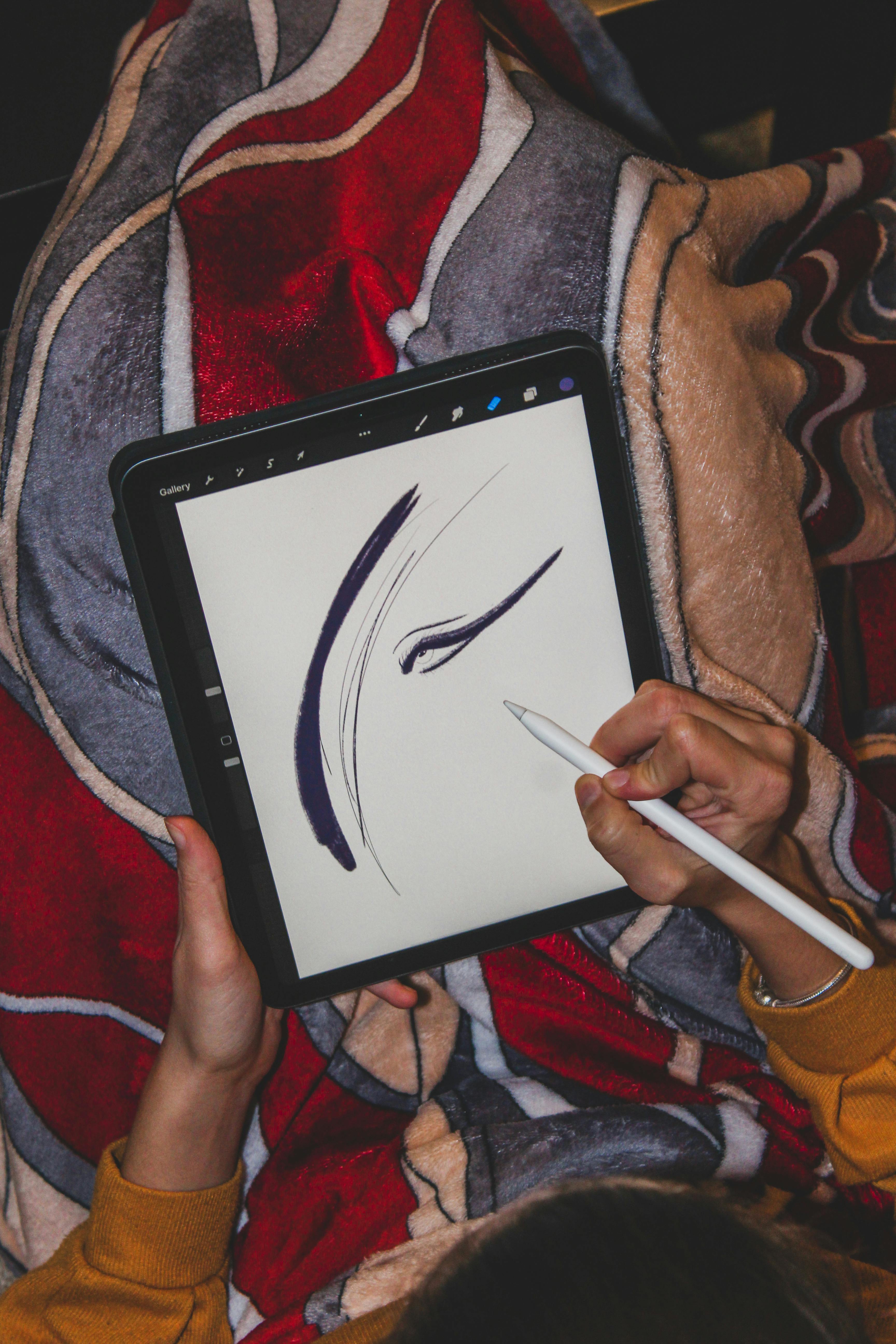
[credit](https://images.pexels.com/photos/11977112/pexels-photo-11977112.jpeg), [licence](https://creativecommons.org/public-domain/)
***
***
## Where They Live: Context and Presentation
The environment where art is intended to be seen also tells a big part of the story.
**Illustration** is typically designed for **reproduction** and broad dissemination. It thrives in diverse media such as books, magazines, websites, movie posters, advertisements, product labels, and digital interfaces. Its strength lies in its ability to be integrated seamlessly into various platforms and reach a mass audience. While the original artwork often possesses significant artistic merit, its primary function is to serve a communicative purpose within a larger commercial or editorial context. The transition to digital platforms has further expanded its reach, allowing for animated illustrations, interactive infographics, and dynamic visual content that adapts across screens and devices. Think of the seamless character animations in your favorite video game, or the engaging explanations in an online educational module – these are illustrations pushing the boundaries of what's possible, not just in print but in immersive, living experiences. Beyond these, consider the intricate design of app interfaces, the visual branding of global tech companies, or motion graphics in broadcast media – all areas where illustration plays a critical role in user experience and brand communication. And now, with virtual reality and augmented reality experiences, illustrators are creating entire interactive worlds, not just images. It's truly mind-blowing to consider the possibilities! This pervasive presence makes illustration a powerful force in shaping visual culture and everyday understanding, from the most mundane product packaging to the most profound journalistic infographics.
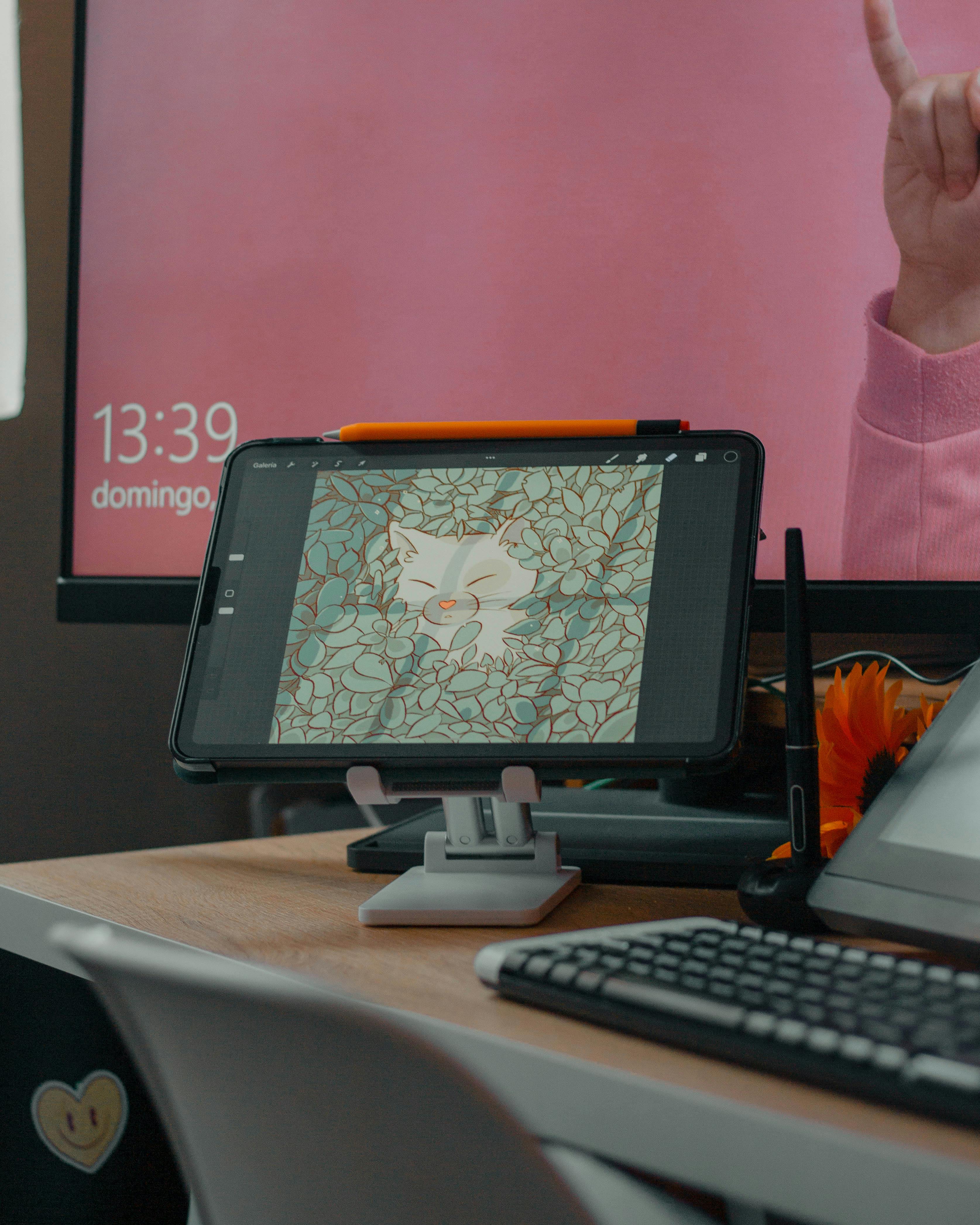
[credit](https://images.pexels.com/photos/12863738/pexels-photo-12863738.jpeg), [licence](https://creativecommons.org/public-domain/)
**Fine art**, on the other hand, traditionally emphasizes the **original object**. It's meant to be experienced firsthand, often in galleries, museums, or private collections. The texture, the scale, the subtle nuances that a photograph can never quite capture – these are all part of the intended experience. When fine artists exhibit their work, for example at institutions like ['s-Hertogenbosch](/den-bosch-museum), there is an emphasis on the direct, unmediated encounter with the physical object. This unique presence is a huge part of its value, something one can learn more about by understanding [how to buy art](/finder/page/how-to-buy-art) or [understanding art prices](/finder/page/understanding-art-prices). Furthermore, site-specific installations, performance art, and land art challenge traditional notions of 'where art lives,' often engaging with public spaces and ephemeral contexts, pushing the boundaries of presentation and audience interaction. I've seen breathtaking land art pieces that are designed to slowly dissolve back into nature, or performance art that happens in an unexpected urban corner – these aren't meant to be bought and hung, but to be experienced in a specific time and place, creating a unique, unrepeatable memory. And then there are conceptual works, sometimes existing only as a set of instructions or a documented idea, prioritizing the intellectual engagement over a physical object. This pushes the boundaries of 'presentation' even further, asking us to consider if the art lives in the mind as much as in a gallery. This evolution highlights a shift from art as a static object to art as an experience, a temporal event, or a conceptual proposition. I've also been captivated by **light installations** that transform cityscapes at night, or **sound art** pieces that immerse you in a world of curated audio, blurring the lines between visual and auditory experience. It's as if artists are saying, "The world is my canvas," using everything from the desert floor to the very air we breathe as their medium, creating art that truly lives and breathes with its environment.

[credit](https://www.widewalls.ch/magazine/antoni-ferrer-interview), [licence](https://creativecommons.org/licenses/by/4.0/)

[credit](https://images.zenmuseum.com/art/671/picture.jpg), [licence](https://creativecommons.org/public-domain/)
***
## The Tools of the Trade: More Alike Than Different, Yet Distinctly Applied
Sometimes, when I'm wrestling with a new idea, I'll reach for a brush, then a stylus, then a lump of clay. It’s a testament to how fluid our artistic practices have become. The tools themselves are often shared, but the *way* we wield them, and the *purpose* behind that wield, that’s where the true distinction lies. It’s less about having a 'fine art' paintbrush and an 'illustration' brush, and more about the mindset you bring to that brush. Speaking of mindset, I've found that sometimes the simple act of preparing your canvas, like applying gesso, can be a meditative, artistic act in itself, bridging the gap between practical craft and expressive intention.

[credit](https://images.pexels.com/photos/7859311/pexels-photo-7859311.jpeg), [licence](https://creativecommons.org/public-domain/)
This is where things get really blurry. Both illustrators and fine artists use paint, pencils, digital tablets, brushes, canvases, and paper. There isn't a hard and fast rule about which tools belong exclusively to whom. You know, when I'm in my studio, I often grab whatever feels right for the moment, whether it's a trusty old brush or a sleek new digital pen. It's less about the tool itself and more about how it's wielded, and for what purpose.
### Traditional Mediums: The Familiar Touch
For a long time, the distinction felt clearer. Fine artists, I thought, were the ones slathering thick oil paints onto canvas, or meticulously cross-hatching with charcoal. And illustrators? Well, they were the masters of ink and watercolor, creating crisp lines for print. But honestly, those lines have always been blurry, even in the 'good old days.' I mean, some of the old masters were basically illustrators for the church or wealthy patrons, telling biblical stories visually. It's all about context, isn't it?
Nowadays, you'll still find fine artists lost in the tactile joy of oil painting or the delicate dance of watercolor, or perhaps even mastering the ancient art of fresco or intricate printmaking techniques like etching and lithography. They might be exploring texture, light, and form in a way that truly celebrates the physical medium, pushing its boundaries and discovering new expressive possibilities. And illustrators? Many still love the expressive qualities of traditional media, using them for children's books, comics, editorial pieces, or even concept art, where the handmade feel adds a unique charm and a touch of the artist's direct hand. Think of the intricate linework in a classic etching used for a fantasy novel, the vibrant gouache in a children’s book, or the dynamic brushstrokes in a comic book page; these choices aren't just aesthetic, they serve the narrative, evoke specific emotions, or clarify complex information. Fine artists, conversely, might use traditional oil painting to explore the nuances of light and shadow in a portrait, charcoal for expressive figure studies, or sculpture to delve into three-dimensional form and spatial relationships for purely aesthetic or conceptual ends. I remember spending weeks just trying to capture the subtle play of light on a draped fabric with charcoal; it wasn't for a client, just for the sheer challenge and discovery. The mastery of these mediums allows for a wide range of expression, whether in service of a story or an internal vision. There's something undeniably magical, I think, about the scent of oil paint, the resistance of a good paper, or the unexpected flow of watercolor. These sensory experiences aren't just incidental; they're an integral part of the creative process and the way the final piece communicates. It’s a primal connection to materials that digital art, for all its wonders, sometimes can’t fully replicate. And if you're curious about the lineage of one of these timeless materials, you might enjoy diving into [the history of oil painting: from ancient pigments to modern masterpieces](/finder/page/the-history-of-oil-painting-from-ancient-pigments-to-modern-masterpieces).

[credit](https://freerangestock.com/photos/177284/artists-workspace-filled-with-paint-brushes-and-supplies.html), [licence](https://creativecommons.org/public-domain/cc0/)
{"alt_en": "Assortment of graphite pencils, charcoal sticks, erasers, and blending stumps laid out on a textured wooden surface, ready for sketching and drawing, often used in fine art for expressive studies.", "alt_nl": "Assortiment van grafietpotloden, houtskoolstiften, gummen en blending stumps uitgestald op een getextureerde houten ondergrond, klaar om te schetsen en tekenen, vaak gebruikt in de beeldende kunst voor expressieve studies."}
[credit](https://images.pexels.com/photos/20515573/pexels-photo-20515573/free-photo-of-woman-sketching-in-drawing-tablet.jpeg), [licence](https://creativecommons.org/public-domain/)
{"alt_en": "A watercolor paint set with various colors, a jar of water, and a paintbrush, alongside a sketchbook with watercolor swatches, common tools for fine art exploration.", "alt_nl": "Een aquarelverfset met diverse kleuren, een pot water en een penseel, naast een schetsboek met aquarelswatches, veelvoorkomende hulpmiddelen voor beeldende kunstverkenning."}
[credit](https://images.pexels.com/photos/13600524/pexels-photo-13600524.jpeg), [licence](https://creativecommons.org/public-domain/)
### Digital Delights: The Modern Canvas
Before we dive deeper, I just had to share something that really captures the essence of working with traditional tools – it's like a little peek into my own studio on a good day:
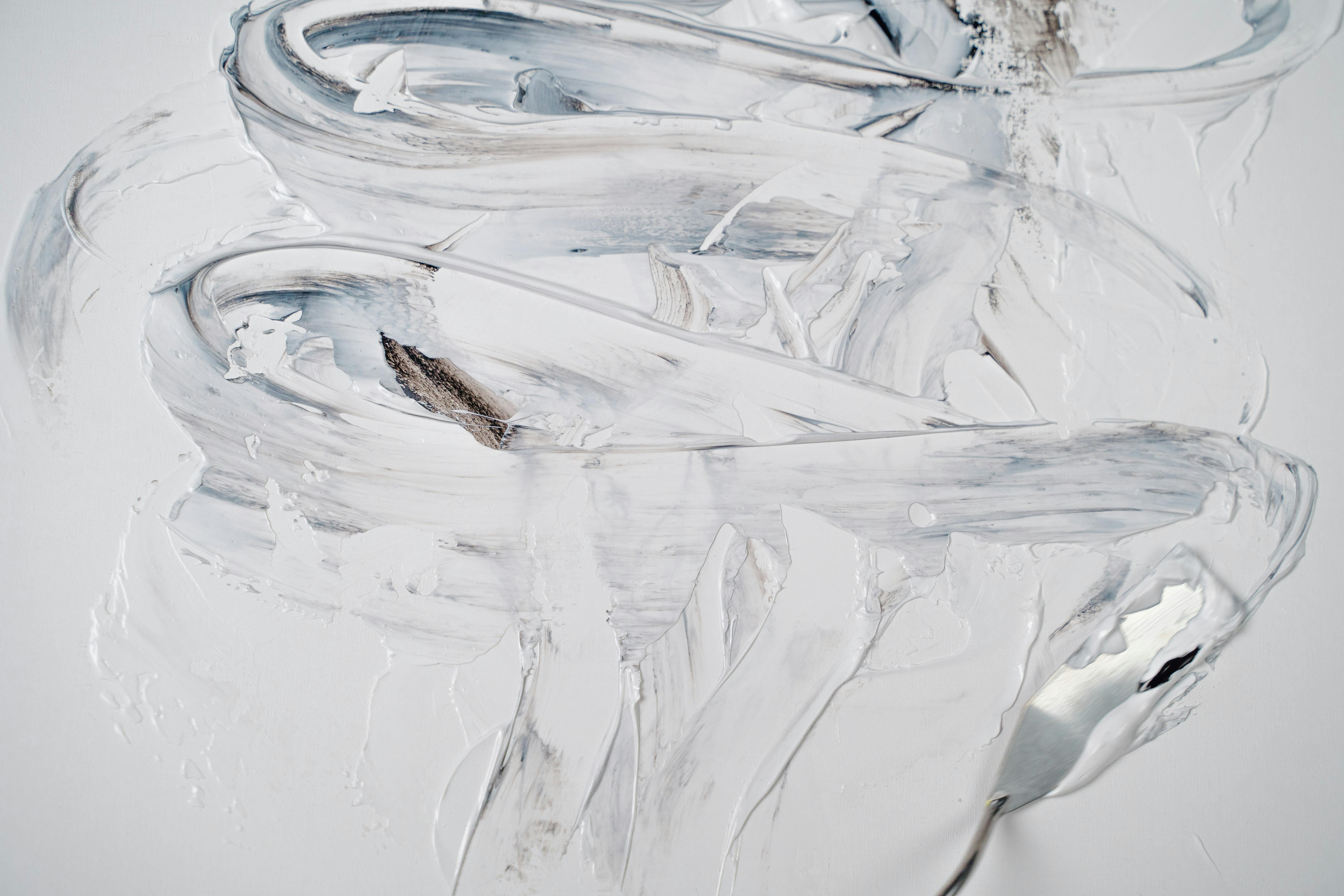
[credit](https://images.pexels.com/photos/10532822/pexels-photo-10532822.jpeg),
[licence](https://creativecommons.org/public-domain/){"alt_en": "Close-up of various oil paint tubes, including brands like Master Class and Sonnet, with colors like Carmine and Thioindigo Red-Brown.", "alt_nl": "Close-up van diverse tubes olieverf, inclusief merken als Master Class en Sonnet, met kleuren als Karmijn en Thioindigo Roodbruin."}
[credit](https://images.pexels.com/photos/4139739/pexels-photo-4139739.jpeg), [licence](https://creativecommons.org/public-domain/)
Then came the digital revolution, profoundly transforming artistic practices. Today, both illustrators and fine artists extensively utilize digital tools, ranging from graphic tablets and software like Adobe Photoshop, Procreate, and Clip Studio Paint, to sophisticated 3D modeling programs, animation suites, and virtual reality platforms. For an illustrator, digital tools offer unparalleled flexibility for revisions, precise color manipulation, and seamless integration into various digital and print formats, streamlining client workflows and meeting tight deadlines. These technologies enable rapid prototyping, efficient communication of concepts, and the creation of dynamic, interactive visual content. This expansion has also given rise to entirely new genres like pixel art, digital painting, and vector illustration, each with its own aesthetic and technical demands. It's a truly exciting time to be creating visual content, with endless digital possibilities at our fingertips.
Now, fine artists are just as likely to be found hunched over a glowing screen, stylus in hand. For me, it's a fantastic way to explore ideas without the mess, giving me the freedom to fail and iterate quickly before committing to a physical canvas. It's just another brush, really, albeit one that plugs into a wall. I've even seen fine artists use 3D modeling software to design complex sculptures before commissioning them in metal or stone, or create entirely virtual reality experiences that push the boundaries of traditional gallery spaces. The digital realm isn't just a shortcut; it's an entirely new universe of creative possibilities. Fine artists use digital tools not only for preliminary sketches and compositional planning but also to create entirely new forms of art, such as generative art where algorithms produce unique visuals, or immersive virtual reality experiences that challenge traditional exhibition spaces.
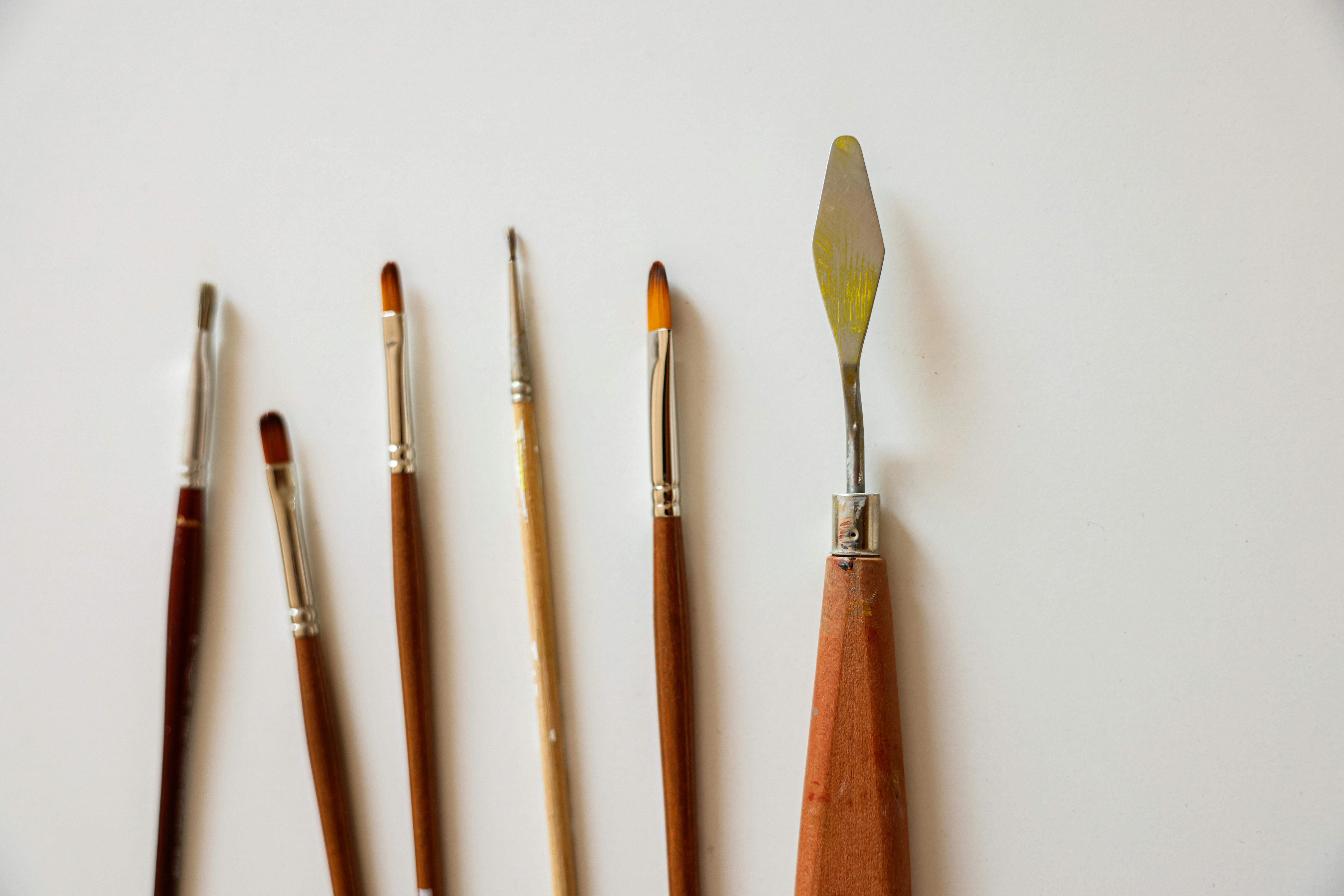
[credit](https://images.pexels.com/photos/7302093/pexels-photo-7302093.jpeg),
[licence](https://creativecommons.org/public-domain/){"alt_en": "Geometric abstract art with pink, blue, green, yellow, and red patterns, depicting buildings, representing themes of memory, change, and home.", "alt_nl": "Geometrische abstracte kunst met roze, blauwe, groene, gele en rode patronen, gebouwen voorstellend, die thema's van geheugen, verandering en thuis vertegenwoordigen."}
[credit](https://images.zenmuseum.com/art/647/picture.jpg), [licence](https://creativecommons.org/public-domain/)
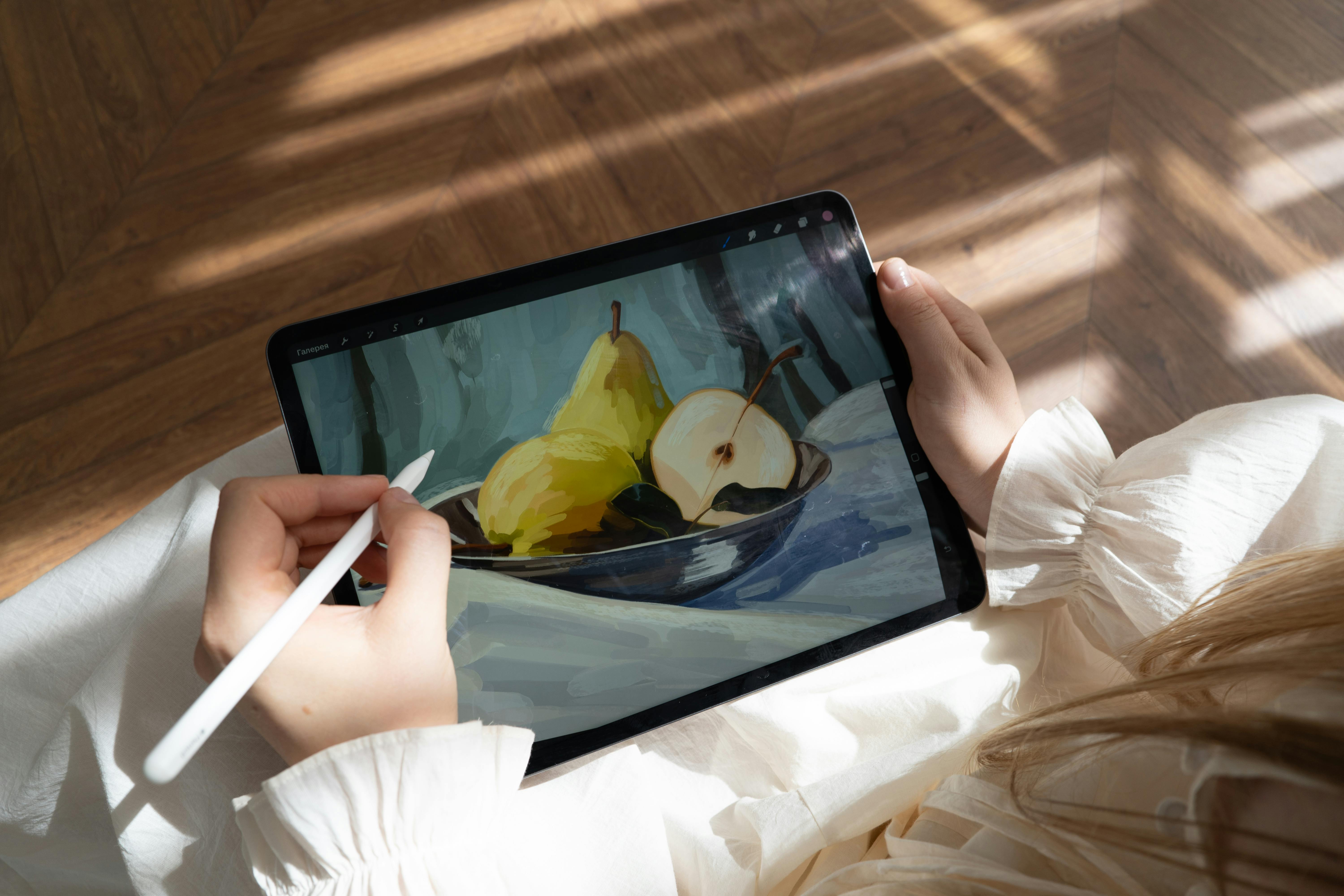
[credit](https://images.pexels.com/photos/19245294/pexels-photo-19245294/free-photo-of-a-girl-drawing-on-a-tablet.jpeg), [licence](https://creativecommons.org/public-domain/)
Fine artists, too, have embraced the digital realm, often using it to plan compositions, experiment with color palettes, or even create entirely digital works that are then printed on archival paper or canvas. For me, it's a fantastic way to explore ideas without the mess, giving me the freedom to fail and iterate quickly before committing to a physical canvas. It's just another brush, really, albeit one that plugs into a wall. I've even seen fine artists use 3D modeling software to design complex sculptures before commissioning them in metal or stone, or create entirely virtual reality experiences that push the boundaries of traditional gallery spaces. The digital realm isn't just a shortcut; it's an entirely new universe of creative possibilities. Fine artists use digital tools not only for preliminary sketches and compositional planning but also to create entirely new forms of art, such as generative art where algorithms produce unique visuals, or immersive virtual reality experiences that challenge traditional exhibition spaces. The integration of AI art tools, for instance, blurs the line of authorship, prompting discussions about creativity and machine intelligence and asking questions like, "who is the creator when the machine generates the image?" Is it the programmer, the artist who prompts the AI, or the algorithm itself? These aren't just academic questions; they're reshaping our understanding of artistic agency and the very value we place on human creativity. The digital landscape facilitates experimentation, rapid iteration, and global dissemination, enabling artists to push conceptual boundaries and engage with audiences in unprecedented ways. And speaking of digital explorations, sometimes it's literally like stepping into a new dimension, as this image might suggest:
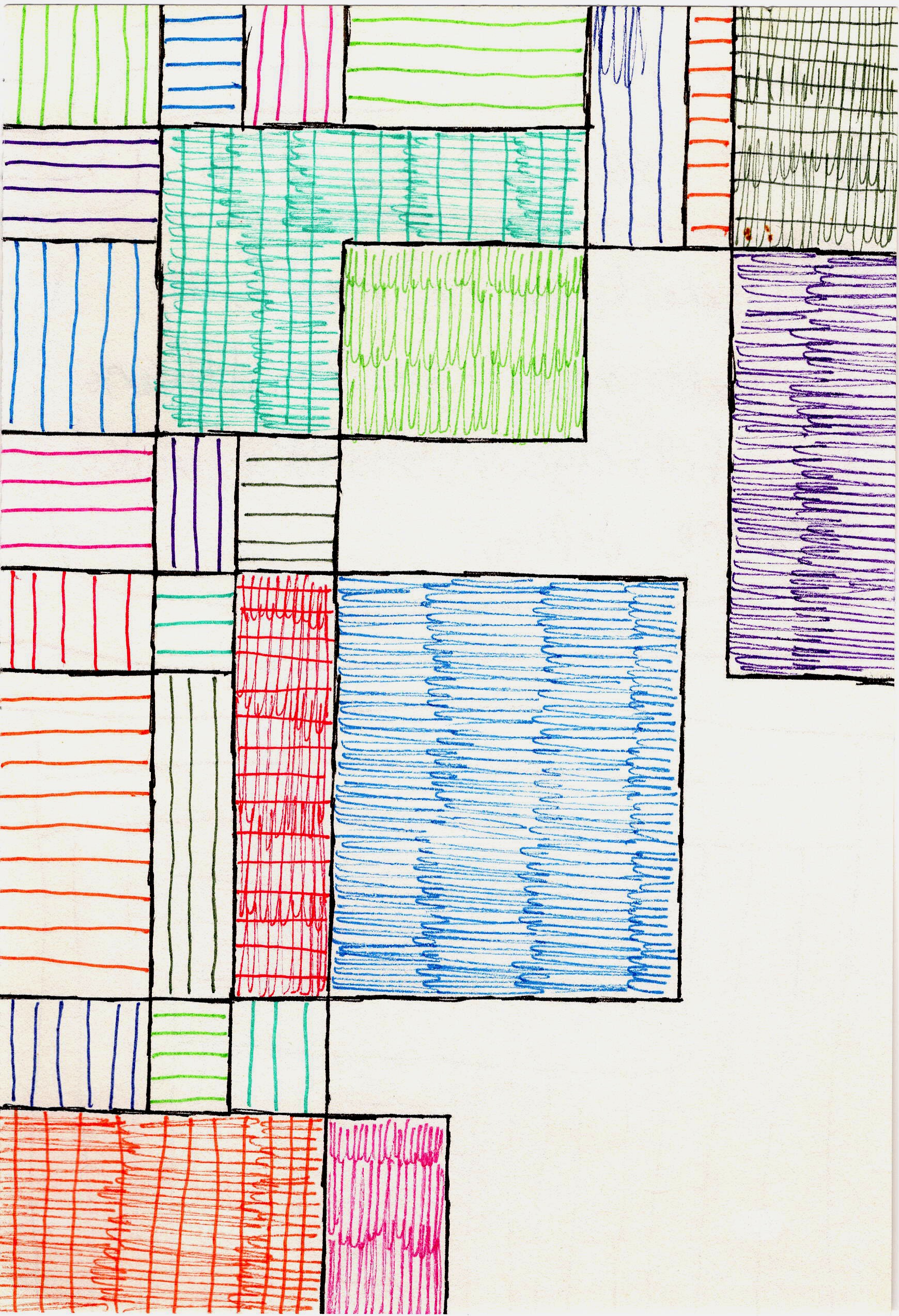
[credit](https://images.zenmuseum.com/art/158/scan.jpeg), [licence](https://creativecommons.org/public-domain/) Speaking of digital, [from pixels to paint: my creative journey integrating digital tools in abstract art](/finder/page/from-pixels-to-paint-my-creative-journey-integrating-digital-tools-in-abstract-art) is a journey I’ve found incredibly rewarding, blurring my own lines between these realms.
### Art and Technology: Beyond the Screen
Beyond traditional and conventional digital tools, the contemporary art landscape is continually reshaped by emerging technologies. This includes the proliferation of 3D printing for sculptural works, augmented reality (AR) for interactive installations that overlay digital content onto the physical world, and even bio-art, which incorporates living organisms, pushing the boundaries of what 'art material' can even mean. I've seen installations where QR codes reveal hidden digital layers when scanned, creating a dialogue between the physical and virtual that's truly mind-bending. Consider artists who collaborate with scientists to grow living sculptures from mycelium, or create sound installations that respond to environmental data – these are fascinating new frontiers. These advancements offer artists novel means to explore scientific concepts, engage with new materials, and create experiences that transcend established artistic categories. The continuous evolution of technology promises an even more dynamic and interdisciplinary future for both illustration and fine art. The possibilities are truly boundless, pushing us to redefine what art *can* be. It's like we're constantly finding new ingredients for the creative feast, and each new tool or material just adds another layer of flavor to the artistic conversation, inviting us to consider new forms of expression like olfactory art or haptic feedback installations. We’re moving into an era where art can literally respond to your presence, change based on environmental data, or even exist primarily as a shared digital experience that lives on the blockchain. It’s an exciting, sometimes dizzying, expansion of the very definition of what art can be, and how it can interact with our lives.
{"alt_en": "A stylized abstract painting featuring a windmill and wind turbine against a bright sky, symbolizing the intersection of tradition, nature, and modern technology in art.", "alt_nl": "Een gestileerd abstract schilderij met een windmolen en windturbine tegen een heldere lucht, symboliseert de kruising van traditie, natuur en moderne technologie in de kunst."}
[credit](https://images.zenmuseum.com/art/527/scan.jpeg), [licence](https://creativecommons.org/public-domain/)
#### Interactive and Immersive Experiences
Beyond static images, emerging technologies are fostering a new wave of interactive and immersive art. Think about virtual reality (VR) galleries where you can 'walk through' impossible spaces, augmented reality (AR) apps that overlay digital art onto your physical surroundings, or installations that respond to your presence with sound and light. These experiences aren't just viewed; they're *participated in*, challenging the traditional passive role of the audience and turning them into co-creators of the artistic moment. It's like stepping into a dream, and that, to me, is incredibly exciting!
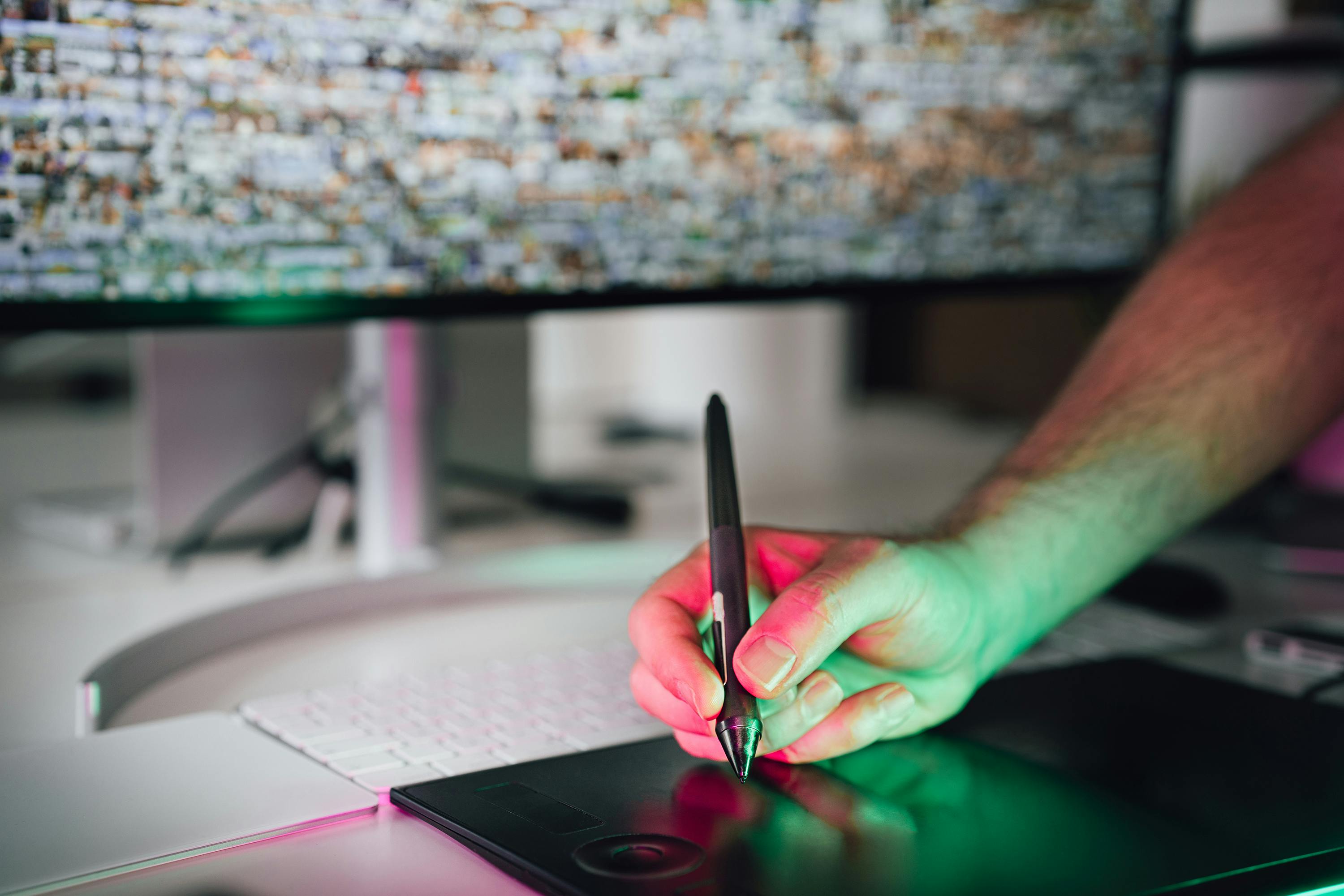
[credit](https://images.pexels.com/photos/20456575/pexels-photo-20456575.jpeg?cs=srgb&dl=pexels-jakubzerdzicki-20456575.jpg&fm=jpg), [licence](https://creativecommons.org/public-domain/)
## Where Worlds Collide: The Ever-Blurring Boundaries
You know, for all the talk of differences, the truth is, the lines between illustration and fine art are more like a watercolor wash than a sharp, inked boundary. It's a beautiful, messy overlap, and I often find myself dancing between the two, sometimes without even realizing it. This convergence is where things get really interesting, especially in our modern world.
### Commercial Art with a 'Fine Art' Soul
Think about album covers, movie posters, or even high-end editorial illustrations. Often, these pieces are commissioned, client-driven, and designed to communicate a specific message – all hallmarks of illustration. Yet, the artists behind them infuse such personal vision, emotional depth, and aesthetic mastery that they transcend mere function and touch upon the qualities we associate with fine art. Some pieces are so iconic, they end up in museums! It makes you wonder, doesn't it? Is it the purpose or the inherent quality of the work that defines it? Think about the stunning concept art for blockbuster films – often functional, but undeniably artistic. Or high-fashion illustrations that grace magazine covers; they're selling something, but they're also expressions of profound aesthetic vision. Think of the golden age of illustration, where artists like Norman Rockwell captured the soul of a nation, or the psychedelic posters of the 60s that became cultural touchstones. These works, while serving a commercial purpose, undeniably possess the gravitas and lasting impact often attributed to fine art. I mean, who can deny the sheer artistic power of a Milton Glaser Bob Dylan poster or a classic movie poster by Drew Struzan? They're commercial, yes, but they're also undeniably masterpieces that communicate profoundly and beautifully. Even in product design, the line blurs; consider the aesthetic elegance of an Apple product, where industrial design meets sculptural art. Or the intricate concept art created for video games, laying the visual foundation for entire virtual worlds – functional, yes, but also deeply artistic in its imaginative scope. And what about the stunning visual storytelling in high-end animation, where every frame is a meticulously crafted work of art, designed for both narrative and aesthetic impact? This blurring challenges us to look beyond the "commercial" label and appreciate the inherent artistic value, recognizing that profound creativity can flourish even within the constraints of a client brief.

[credit](https://live.staticflickr.com/107/291470015_189e67bc22_b.jpg), [licence](https://creativecommons.org/licenses/by-nc/2.0/)
### Fine Art with a Narrative Punch
Conversely, many contemporary fine artists are explicitly narrative in their work. They tell stories, explore social commentary, or depict recognizable figures and scenes, much like an illustrator might. Their work hangs in galleries and commands high prices, but the intention is undeniably communicative, even if the 'brief' comes from within. Street art, for example, often starts as a powerful visual message in a public space, but its artistic merit and cultural impact can easily elevate it to the realm of fine art, exhibited in galleries and celebrated by critics. And what about graphic novels? Many are now considered serious literary and artistic works, tackling complex social and personal narratives with a depth that rivals traditional fine art painting or sculpture. Works by artists like Art Spiegelman ("Maus") or Marjane Satrapi ("Persepolis") aren't just 'comics'; they're profound narratives presented through sequential art, demanding the same intellectual and emotional engagement as any great novel or painting. It's a beautiful rebellion against rigid categorization, if you ask me. For me, these overlaps are the most exciting places to be, where the established definitions start to unravel and true innovation takes hold. Consider also the rise of social realism in fine art, where artists intentionally depict everyday life or social injustices, often with a clear, communicative intent that echoes illustration's purpose, but within the autonomous framework of fine art. These narrative approaches in fine art often serve to provoke social dialogue, memorialize collective experiences, or explore identity politics in deeply engaging ways. Think too of activist art, where artists use their autonomous expression to directly address political or social issues, often employing visual strategies that are clear and impactful, much like a powerful editorial illustration. It's about using the freedom of fine art to deliver a message with undeniable force.
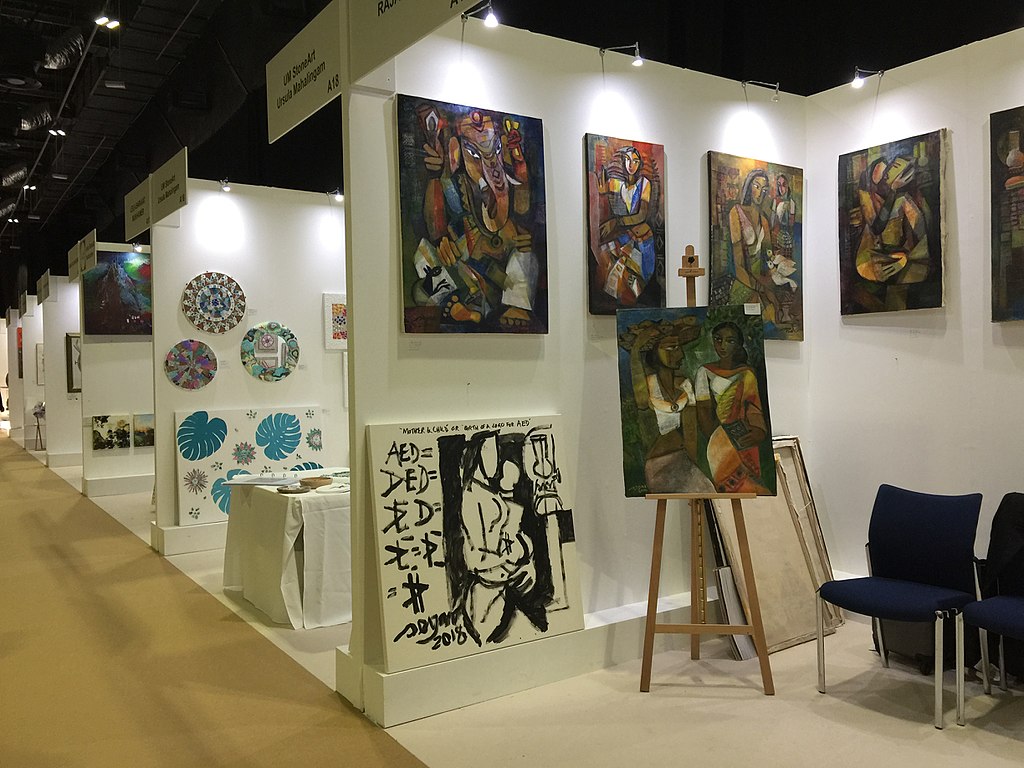
[credit](https://commons.wikimedia.org/wiki/File:Exhibiting_stalls_in_World_Art_Dubai.jpg),
[licence](https://creativecommons.org/licenses/by-sa/4.0)
It's like finding a hidden pathway between two familiar gardens – suddenly, the landscape feels much larger, more interconnected, and infinitely more intriguing.
## The Interdisciplinary Artist and Collaborative Practices
In contemporary art, the rise of interdisciplinary practice further blur traditional boundaries. Artists increasingly work across mediums, combining elements of painting, sculpture, digital media, and performance. This often involves collaborations with experts from other fields, such as scientists, engineers, or musicians, leading to innovative projects that defy easy categorization. I've seen artists work with neuroscientists to create visualizations of brain activity, or with architects to design public spaces that are both functional and deeply artistic. It's a testament to the idea that creativity thrives at the intersections. These collaborative ventures reflect a broader shift towards an understanding of art as a dynamic process that responds to complex global issues, rather than isolated acts of individual genius. Consider also the rise of **Sound Art**, where audio experiences become the primary artistic medium, or even **Culinary Art**, where food preparation is geëleveerd tot een expressieve vorm, challenging traditional boundaries of what constitutes 'art.' These fields demonstrate art's continuous expansion into multi-sensory and interdisciplinary realms. Such approaches highlight a shared artistic impulse to explore, communicate, and innovate, irrespective of traditional labels. I've seen artists collaborate with dancers to create interactive performance spaces, or with urban planners to inject artistic interventions into cityscapes. It's about breaking down silos and recognizing that the most potent creativity often sparks at the crossroads of different disciplines. This expansion into public spaces also brings us to the fascinating realm of **Public Art**, where artists create works explicitly for communal engagement, often blurring the lines between fine art, urban design, and social commentary. Whether it’s a monumental sculpture, a vibrant mural, or an interactive installation, public art is inherently about dialogue with its environment and its inhabitants, carrying both aesthetic and civic responsibilities. This is where art truly becomes part of the shared human experience, directly impacting daily life. Public art can transform urban spaces, foster community identity, commemorate historical events, or simply bring joy and beauty to everyday routines, demonstrating its profound ability to shape public perception and enrich civic life. It really is art for the people, by the people, sometimes, and I find that incredibly inspiring. From large-scale architectural interventions to temporary street art projects, public art fundamentally redefines the gallery space, embedding art directly into the fabric of daily life.
{"alt_en": "A vibrant and colorful street art mural depicting diverse faces and abstract patterns, blending into an urban environment, symbolizing community and expression.", "alt_nl": "Een levendige en kleurrijke straatkunstmuurschildering met diverse gezichten en abstracte patronen, die opgaat in een stedelijke omgeving, symbool staat voor gemeenschap en expressie."}
[credit](https://images.zenmuseum.com/art/671/picture.jpg), [licence](https://creativecommons.org/public-domain/)
#### The Influence of Design Thinking
And let's not forget how 'design thinking' has influenced both fields. In illustration, it's about solving a communication problem with elegance and efficiency. But in fine art, too, artists often employ design principles – composition, color theory, balance – not just for aesthetic appeal, but to guide the viewer's eye, to create a sense of tension, or to convey a specific emotion. It's a reminder that even the most 'autonomous' fine art benefits from a deep understanding of visual effectiveness, a lesson I've certainly learned in my own abstract work.
## The Interdisciplinary Artist and Collaborative Practices
In contemporary art, the rise of interdisciplinary practice further blurs traditional boundaries. Artists increasingly work across mediums, combining elements of painting, sculpture, digital media, and performance. This often involves collaborations with experts from other fields, such as scientists, engineers, or musicians, leading to innovative projects that defy easy categorization. I've seen artists work with neuroscientists to create visualizations of brain activity, or with architects to design public spaces that are both functional and deeply artistic. It's a testament to the idea that creativity thrives at the intersections. These collaborative ventures reflect a broader shift towards an understanding of art as a dynamic process that responds to complex global issues, rather than isolated acts of individual genius. Consider also the rise of **Sound Art**, where audio experiences become the primary artistic medium, or even **Culinary Art**, where food preparation is elevated to an expressive form, challenging traditional boundaries of what constitutes 'art.' These fields demonstrate art's continuous expansion into multi-sensory and interdisciplinary realms. Such approaches highlight a shared artistic impulse to explore, communicate, and innovate, irrespective of traditional labels. I've seen artists collaborate with dancers to create interactive performance spaces, or with urban planners to inject artistic interventions into cityscapes. It's about breaking down silos and recognizing that the most potent creativity often sparks at the crossroads of different disciplines. This expansion into public spaces also brings us to the fascinating realm of **Public Art**, where artists create works explicitly for communal engagement, often blurring the lines between fine art, urban design, and social commentary. Whether it’s a monumental sculpture, a vibrant mural, or an interactive installation, public art is inherently about dialogue with its environment and its inhabitants, carrying both aesthetic and civic responsibilities. This is where art truly becomes part of the shared human experience, directly impacting daily life. Public art can transform urban spaces, foster community identity, commemorate historical events, or simply bring joy and beauty to everyday routines, demonstrating its profound ability to shape public perception and enrich civic life. It really is art for the people, by the people, sometimes, and I find that incredibly inspiring. From large-scale architectural interventions to temporary street art projects, public art fundamentally redefines the gallery space, embedding art directly into the fabric of daily life.
***
## The Digital Frontier and Beyond: A New Renaissance?
You know, sometimes I feel like we're living through another major artistic revolution, similar to the Industrial Revolution but with pixels instead of printing presses. The digital age has absolutely shattered some old walls and built incredible new bridges between what we once considered separate artistic territories.
### Pixels, Screens, and Interactive Worlds
It’s not just about using a digital tablet for painting anymore. We're talking about entire artistic practices built in the digital realm: 3D modeling, animation, virtual reality art, generative art, and even interactive installations. Is a meticulously crafted 3D character for a film fine art or illustration? What about a stunning visual effect that takes your breath away? The lines get so wonderfully blurry, don't they? Digital tools offer unparalleled freedom to experiment, to undo mistakes with a click, and to share work globally in an instant. For me, exploring [from pixels to paint: my creative journey integrating digital tools in abstract art](/finder/page/from-pixels-to-paint-my-creative-journey-integrating-digital-tools-in-abstract-art) has been a game-changer, opening up new avenues for abstract expression I never imagined.
We're also seeing the rise of phenomena like NFT art, where digital creations gain unprecedented value and ownership in a decentralized marketplace. NFTs introduce concepts of digital scarcity and verifiable provenance to a realm previously characterized by infinite reproducibility, sparking heated debates about the nature of collecting and ownership in the digital age. And let me tell you, as someone who loves the tangible, the idea of owning a digital artwork in a verifiable way is both fascinating and a little unsettling! The environmental impact of these transactions, due to the energy consumption of blockchain technology, also presents a significant ethical consideration that artists and collectors are increasingly grappling with. And then there's AI art, pushing the very definition of 'creator' – who is the artist when an algorithm generates the image, and what does that mean for human ingenuity? These are the exciting, sometimes bewildering, questions that the digital frontier throws at us, forcing us to redefine our understanding of art itself. This intersection of technology and art also introduces new considerations for intellectual property and the role of human craft versus algorithmic generation. If you're pondering these fascinating developments, you might also find [AI as co-creator: exploring collaborative art projects with artificial intelligence](/finder/page/ai-as-co-creator:-exploring-collaborative-art-projects-with-artificial-intelligence) a compelling read.

[credit](https://images.zenmuseum.com/art/647/picture.jpg), [licence](https://creativecommons.org/public-domain/)
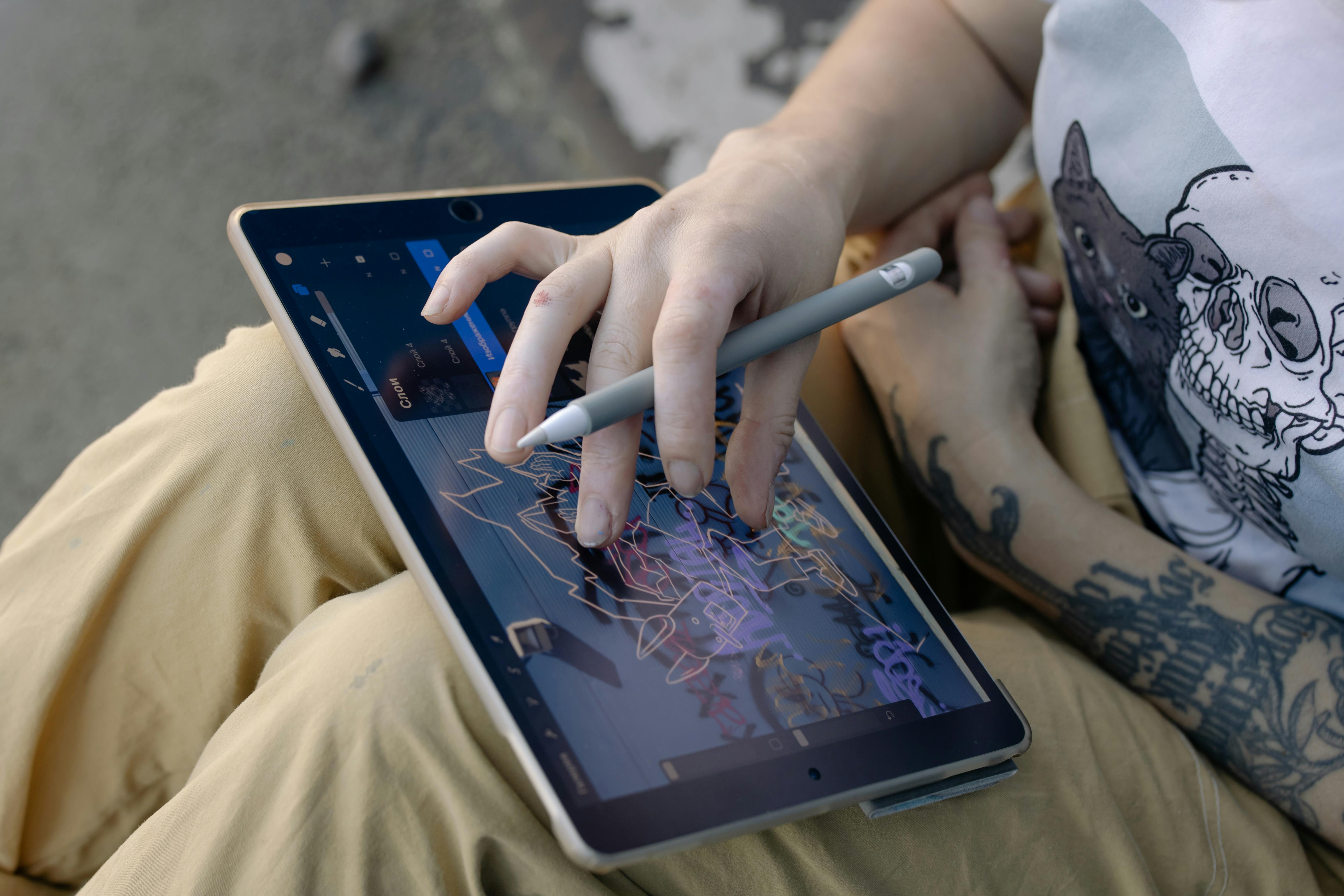
[credit](https://images.pexels.com/photos/7117274/pexels-photo-7117274.jpeg), [licence](https://creativecommons.org/public-domain/)
### Performance, Installation, and Concept
Speaking of blurring lines, I recently found this image that perfectly encapsulates the blend of digital tools and artistic vision – it's just another reminder of how much the landscape has changed:
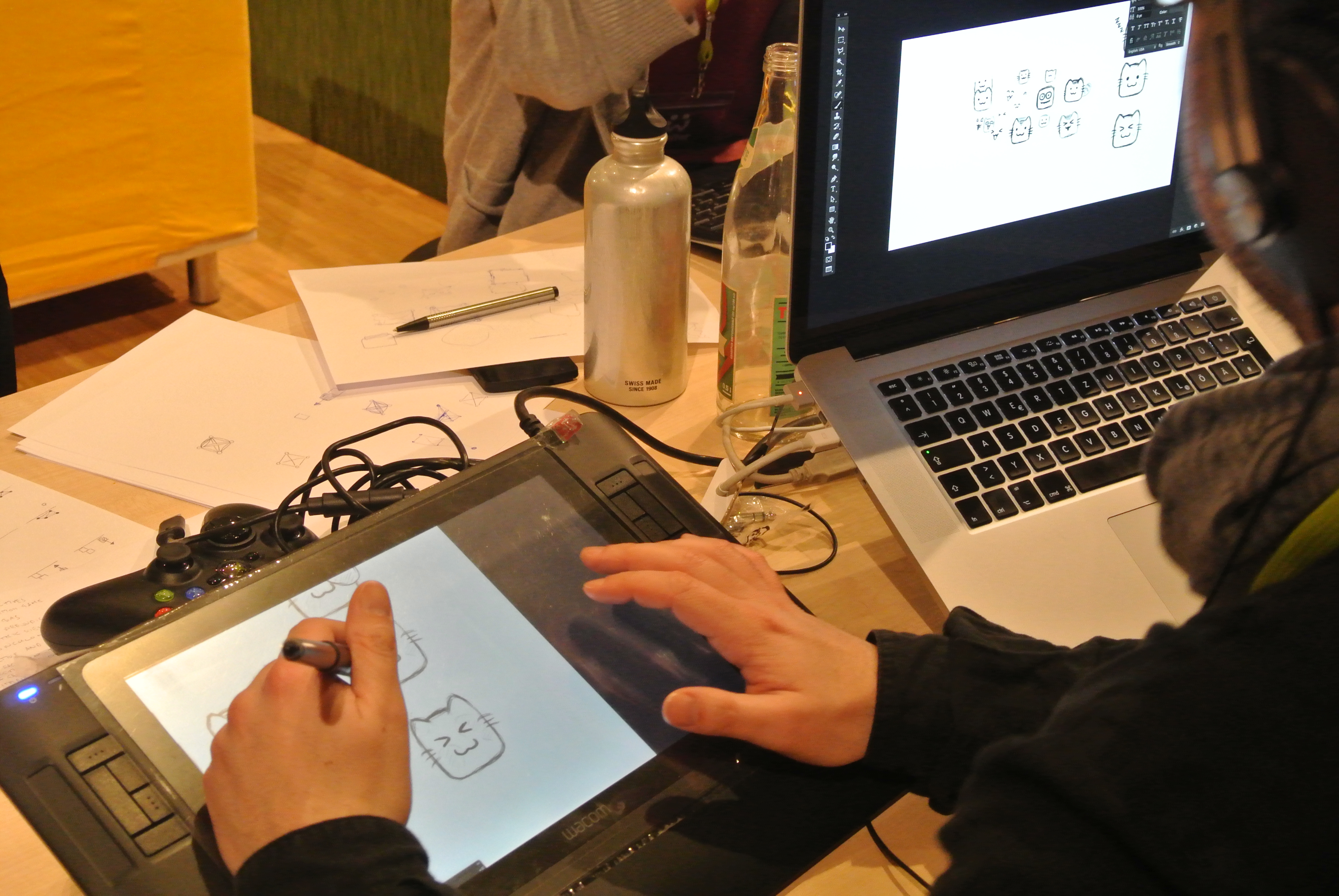
[credit](https://upload.wikimedia.org/wikipedia/commons/d/da/Drawing_Cats_on_Wacom_Intuos3_A5_graphics_tablet_-_Global_Game_Jam_Berlin_2014.jpg), [licence](https://creativecommons.org/licenses/by/2.0)
And it's not just digital. Contemporary art has pushed boundaries in so many directions, challenging the very definition of what "art" can be. Performance art, installation art, conceptual art – these forms often prioritize an idea or an experience over a traditional, tangible object. They might be temporary, ephemeral, or interactive. They often communicate powerful messages, blurring the line between artistic expression and a curated, illustrative statement. I've encountered performance pieces that last only a few minutes, or installations built from ice that slowly melt away, leaving only a memory. This transient nature forces us to confront the impermanence of existence, which is a pretty profound thing for art to do, don't you think? It forces us to ask: if the *experience* is the art, does its purpose determine its category? My gut tells me it's all part of the same glorious, sprawling family. Think of the work of Marina Abramović, whose durational performances often challenge the limits of the human body and mind, or Allan Kaprow's 'Happenings,' which invited audience participation to create ephemeral, unrepeatable artistic events. These aren't just pretty pictures; they are profound, often unsettling, explorations of existence itself. This expanded understanding of art embraces ephemeral forms, acknowledging that the value can lie in the temporal experience rather than a permanent artifact.
#### The Role of Sound and Time
And it's not just visual anymore. The digital age and conceptual art have also opened up the realm for sound art, time-based media, and even olfactory art. How does a piece that fills a room with a specific scent, or a composition that unfolds over hours, fit into our traditional definitions? These art forms challenge our perceptions, forcing us to engage with art beyond the purely visual, inviting a multi-sensory and temporal experience. It’s an exciting expansion of what art can be, encompassing the fleeting and the immersive in entirely new ways. These forms often bridge the gap between artistic expression and a curated, illustrative statement, compelling us to consider the message as much as the medium. For example, artists using data visualization to create intricate patterns or interactive experiences also blur the lines, turning abstract data into compelling visual narratives that are both informative and aesthetically rich.
***## A Historical Detour: How We Got Here
It’s fascinating to think about how these distinctions even came about, isn't it? For much of history, the concepts of 'fine art' and 'illustration' were largely undifferentiated, reflecting a holistic view of visual creation. In ancient civilizations, from Egyptian tomb paintings to Roman frescoes, art served vital religious, historical, and commemorative functions, inextricably linked to societal needs. Similarly, medieval illuminated manuscripts were meticulously crafted works that simultaneously conveyed sacred narratives to a largely illiterate populace and stood as objects of profound aesthetic beauty. Artists of these eras did not conceive of their work through modern categorical lenses; rather, they were skilled artisans fulfilling specific communal or religious mandates. Across diverse cultures, Indigenous art forms frequently embody both deeply spiritual symbolism and intensely practical utility, seamlessly integrating function and aesthetics and challenging Western academic divisions. Consider the intricate dot paintings of Indigenous Australian artists, which map ancestral lands and stories, or the powerful carvings of the Maori, embodying tribal histories and spiritual beliefs. These forms demonstrate a profound, integrated relationship between art, culture, and daily life, often never needing our Western distinctions. It's a beautiful reminder of art's deeper, more integrated role in human societies.
### Art in Antiquity and Pre-Modern Eras
Before the Enlightenment, art served a deeply integrated role in society, often indistinguishable from craft or utility. Think of the intricate patterns on ancient pottery, designed to hold food but also to tell stories, or the vibrant tapestries that kept castles warm while depicting historical battles. These early forms didn't separate beauty from function in the way we often do today; they were a holistic expression of human ingenuity and cultural values.
During antiquity, artistic production was fundamentally intertwined with religious, political, and social structures. From the monumental sculptures of Mesopotamia and Egypt that served to immortalize rulers and deities, to the narrative friezes of Greek temples, art was didactic, celebratory, and functional. The pre-modern era in various global traditions, including intricate Islamic calligraphy, elaborate Buddhist mandalas, and detailed Mesoamerican codices, demonstrates how visual forms conveyed complex cultural, spiritual, and historical information, often with exceptional technical skill and symbolic depth. These historical periods underscore a pervasive understanding of art as an integral component of communal life and intellectual transmission. In places like Japan, ukiyo-e woodblock prints, while often depicting popular entertainment and scenes from daily life, are now celebrated as fine art for their exquisite composition and technical skill. Similarly, Chinese scroll paintings, with their deep philosophical undertones and masterful brushwork, served both as meditative objects and ways to record history or illustrate poetry. It really makes you question our Western-centric views, doesn't it? And if you look to Indigenous art forms worldwide, you'll see intricate weaving, ceremonial masks, or storytelling paintings that seamlessly blend spiritual significance with practical use, never needing the Western distinction between 'art' and 'craft'. It’s a beautiful reminder of art’s deeper, more integrated role in human societies. The cave paintings of Lascaux or the elaborate narrative mosaics of Byzantium further exemplify how art served as a primary means of recording, celebrating, and instructing, long before modern categorizations emerged.
### The Renaissance and the Rise of the 'Artist'
The Renaissance, though, started to shift things, slowly but surely. As artists like Leonardo da Vinci and Michelangelo gained individual recognition and even celebrity status, the idea of the artist as a genius creator, rather than just a skilled craftsman, began to take hold. They were still largely commissioned for grand works by patrons – the church, wealthy families, royalty – but their personal vision, unique style, and unparalleled mastery were increasingly celebrated and sought after. This period laid crucial groundwork for the elevation of 'art for art's sake,' fostering a subtle yet significant separation from works that served a more explicit, often functional or commercial, purpose. It was the dawn of the artist-as-individual, a concept that continues to resonate today. The burgeoning patronage system, while still dictating subjects, increasingly valued individual stylistic innovation. Before the Renaissance, patronage was largely ecclesiastical or aristocratic, with art serving to glorify God, church, or monarch. But as society evolved, so did patronage, eventually shifting towards wealthy merchants and later, the burgeoning middle class, each with their own desires and demands for artistic representation. This evolution of patronage directly influenced what art was made, who made it, and for whom, fundamentally shaping the trajectory of both fine art and, eventually, commercial illustration. These academies played a huge role in setting the rules, and if you didn't follow them, well, you were often out of the 'club.' This era also saw the emergence of formal art academies across Europe, such as the French Académie royale de peinture et de sculpture, which institutionalized artistic training, established hierarchies of genres (with history painting at the apex), and emphasized classical ideals, thereby further solidifying the distinction between 'high art' and other forms of visual production, often marginalizing craft and applied arts, like pottery or textile work. This systematic exclusion of functional or decorative arts created a lasting schism in Western art, one we're still trying to heal today, and arguably still influences our perception of artistic 'value' and 'status.' We even have a wonderful visual of this kind of work:
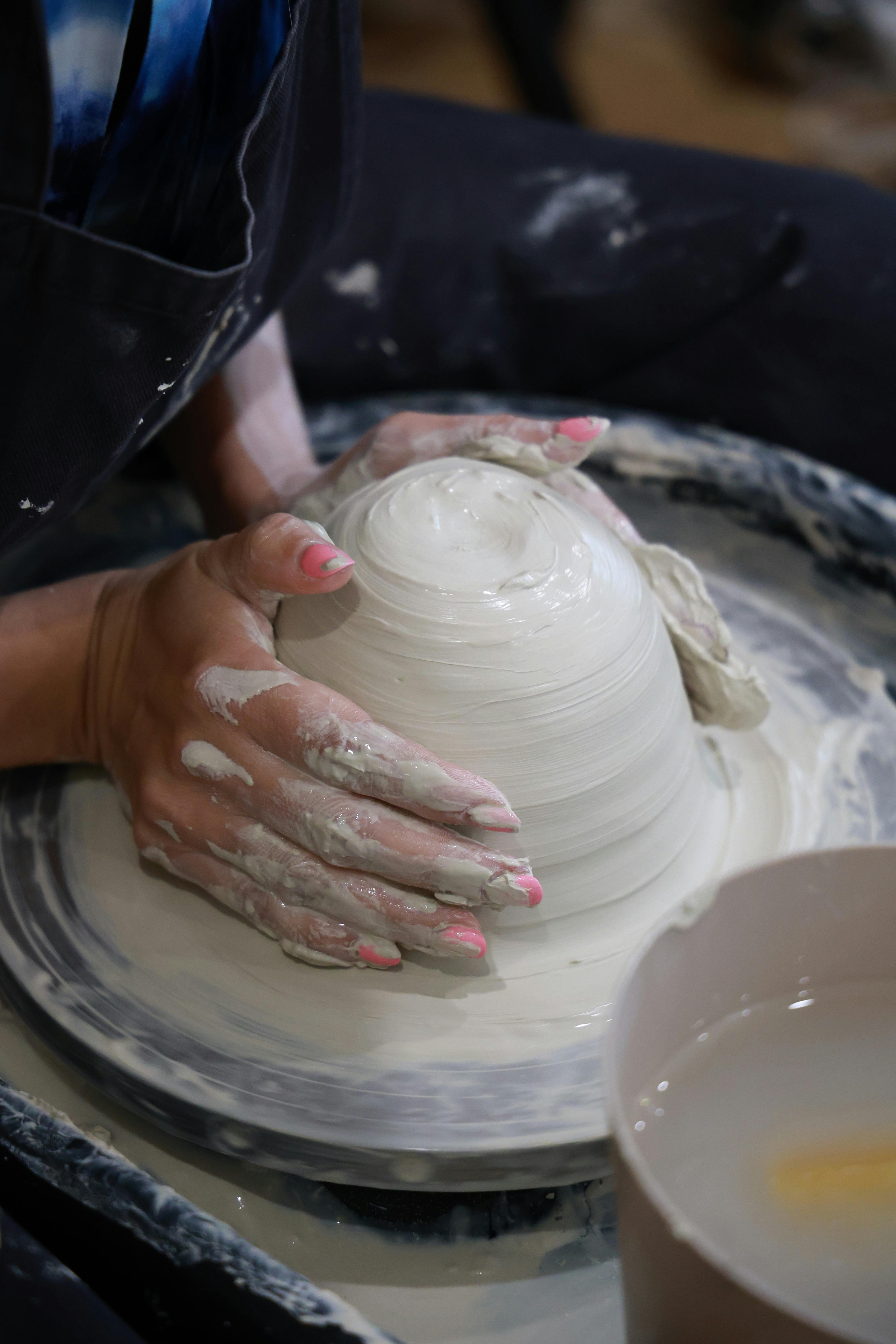
[credit](https://images.pexels.com/photos/27682065/pexels-photo-27682065.jpeg?cs=srgb&dl=pexels-dmitry-ovsyannikov-271243380-27682065.jpg&fm=jpg), [licence](https://creativecommons.org/public-domain/)
### The Age of Modernism and its Discontents
The 19th and early 20th centuries witnessed an intensified divergence with the rise of Modernism. Movements like Romanticism, Realism, Impressionism, and subsequent avant-garde styles saw fine artists increasingly prioritizing personal expression, emotional depth, and formal experimentation. Simultaneously, the entrenched Salon system in France, a powerful arbiter of artistic taste, often rejected innovative works that challenged its conservative norms, thereby inadvertently fueling the development of independent exhibitions and new artistic pathways. During this period, commercial art, which was rapidly gaining traction due to advancements in printing and advertising, was frequently dismissed as merely decorative or functional, lacking the intellectual rigor and profound vision attributed to fine art. The invention of photography also threw a wrench into things; if a camera could perfectly capture reality, what was the point of a painter simply replicating it? This pushed fine artists towards more abstract and conceptual explorations, further separating their concerns from those of illustrators. It was an existential crisis for painting, leading to radical experimentation and the birth of movements like Cubism and Fauvism that shattered traditional representation. Interestingly, photography itself eventually fought for and earned its place as a legitimate fine art medium, another example of boundaries dissolving over time. This era was marked by intense artistic upheaval, where new definitions of art were constantly being contested and forged. It also gave rise to new forms of artistic expression like collages and assemblages, directly challenging traditional notions of medium and authorship, radically expanding the very palette and methods available to artists. And if you're curious about how artists like Picasso and Braque broke down and reassembled reality, exploring the principles of abstraction, you might find [the definitive guide to understanding abstraction from early concepts to contemporary interpretations](/finder/page/the-definitive-guide-to-understanding-abstraction-from-early-concepts-to-contemporary-interpretations) a compelling read.
### The Industrial Revolution and Mass Production
The real chasm, I think, opened up with the Industrial Revolution. Suddenly, printing technologies allowed for the mass reproduction of images. This created a huge demand for visuals in newspapers, magazines, and advertisements. This is where illustration, as a distinct profession focused on commercial application and widespread dissemination, truly boomed. Its purpose was clear: to communicate quickly and effectively to a broad audience, often with a commercial goal in mind. The rise of advertising agencies created an unprecedented demand for visual communicators, leading to the professionalization of illustration as a distinct and thriving field. Fine art, in contrast, continued to emphasize the unique, original object, often for a more elite audience.
It’s analogous to the advent of mass media versus the singular experience of live performance. Both offer valuable cultural engagement, but one is designed for mass consumption and the other for a unique, often unrepeatable, encounter. It’s like two different rivers, flowing from the same source but carving their own distinct paths. This profound shift led to the solidification of distinct infrastructures within the art world, giving rise to separate educational institutions, specialized markets, and differing critical receptions for each discipline. The advancements in printing technology, particularly lithography and chromolithography, made it possible to reproduce images cheaply and on a massive scale, creating an unprecedented demand for illustrators in newspapers, magazines, and advertising. This, in turn, fueled the professionalization of illustration as a distinct field. The Industrial Revolution fundamentally reshaped how artists earned a living, segmenting opportunities and influencing the perceived value of their respective crafts. This era cemented the idea of an 'original' artwork as intrinsically more valuable than a reproduction, a concept still deeply ingrained in the fine art market today. Before this, a skilled artisan creating a religious icon for a church might be reproducing a known image, but the *craft* and *devotion* in the reproduction were highly valued. Mass production, however, shifted perception, making the unique, handmade object the pinnacle of artistic value in fine art, while reproduction became the domain of illustration. This profound shift also led to distinct training pathways and professional organizations for each discipline, further solidifying the perceived separation, almost creating two distinct castes within the art world, which, thankfully, we're now working to dismantle.
#### The Enduring 'Craft' vs. 'Art' Debate
And this brings us to a historical tension that still lingers: the 'craft' versus 'art' debate. Historically, anything functional or reproducible, from pottery to textiles to illustration, was often relegated to the realm of 'craft,' while painting and sculpture were elevated to 'fine art.' But honestly, where do you draw that line? Is a master weaver any less of an artist than a master painter? I think we're slowly, thankfully, moving past these outdated hierarchies, recognizing the skill, creativity, and profound human expression in all forms of making. Even photography, initially dismissed as a mere technical process, eventually gained widespread acceptance as a fine art medium, demonstrating how boundaries can shift over time and with evolving cultural perceptions. This debate often felt, to me, like a strange kind of gatekeeping, trying to dictate what counts as "serious" art. But when you look at the intricate detail of a hand-crafted ceramic vase, or the profound storytelling in a traditional quilt, how can you deny the artistic merit? It's about valuing intention, skill, and expression across the entire spectrum of human creation, not just within narrowly defined categories. We're learning, slowly but surely, that beauty and meaning aren't confined to a canvas or a pedestal; they can be found in the everyday, the functional, and the wonderfully crafted.

[credit](https://www.flickr.com/photos/fabola/41351098495/), [licence](https://creativecommons.org/licenses/by-sa/2.0/)
***
## The Legal Canvas: Ownership, Copyright, and Value
Okay, let's talk about the less glamorous, but equally important, side of making art: the business and legal bits. As an artist, you quickly learn that creation is only half the battle; protecting your work and understanding its commercial life is crucial. And this is another area where illustration and fine art often diverge in fascinating ways.
### Who Owns the Idea? Copyright and Licensing
For illustrators, the relationship with their work often involves **licensing**. When you create an illustration for a client – say, a book cover or an advertisement – you typically license the rights for them to use that image for a specific purpose, for a specific period, and in specific territories. You, the artist, usually retain the underlying copyright. This means you can't just slap a client's logo on your fine art pieces, and they can't use your book cover illustration for a coffee mug without a separate agreement. It's a structured, contractual dance, ensuring both parties understand the boundaries of use. It's a bit like loaning your car versus selling it; the terms matter! This can involve various types of licenses, such as exclusive or non-exclusive, rights-managed or royalty-free, each with its own set of implications for how and where the work can appear, and for how long. It's a complex legal landscape, but essential for protecting creative assets and ensuring fair compensation. Additionally, illustrators often navigate issues of intellectual property, derivative works, and the 'work-for-hire' doctrine, which can affect who ultimately owns the copyright to a commissioned piece. Understanding these nuances is critical, as a 'work-for-hire' agreement typically means the client, not the artist, owns the copyright from the outset, a significant distinction for long-term creative control and revenue. It’s a bit of a tricky legal dance, and one that illustrators learn to navigate carefully to protect their creative assets. These legal frameworks are vital for ensuring both artists and clients have clear expectations and protections regarding the use and ownership of visual content. For instance, imagine creating a stunning logo for a brand; if it's 'work-for-hire,' that brand owns the logo entirely, and you can't reuse elements of it for another client, even if it feels like 'your' style. It's a pragmatic necessity in the commercial world, but it asks artists to be sharp on the legal front, not just the creative one.
For fine artists, the ownership is usually much simpler: you create the physical object, you own the physical object, and you own the copyright to the image on that object. When you sell a painting, you're generally selling the *physical artwork* itself, not the rights to reproduce it. If someone wants to print your painting on a poster or a t-shirt, they would need to license that right from you separately. It’s about the unique object, and the artist's control over its image. Of course, this isn't always straightforward, and understanding [how to buy art](/finder/page/how-to-buy-art) and [understanding art prices](/finder/page/understanding-art-prices) often involves navigating these very questions. You also have what are called 'moral rights,' which means you generally have the right to be credited for your work and to object to any distortion or mutilation of your art, even after it's been sold. This also includes the 'droit de suite,' or resale royalty right, in some jurisdictions, meaning artists receive a percentage of subsequent sales of their work. It's a way of protecting the integrity of your artistic vision and ensuring ongoing compensation, long after the paint has dried. These rights, though not universally applied, are crucial for empowering artists beyond the initial sale, recognizing their continued connection and claim to their creations. It’s about more than just a transaction; it’s about acknowledging the enduring spiritual and intellectual ownership an artist has over their work, even when the physical piece changes hands.
#### The Global Art Market: Interconnected and Influential
Beyond the local galleries and commissions, there's a vast, intricate global art market. For fine art, major auction houses in London, New York, and Hong Kong become epicenters of value, with art fairs like Art Basel attracting collectors and dealers from around the world. These events are crucial for setting trends, establishing prices, and influencing the careers of artists on an international scale. For illustration, while less about investment speculation, the market is also increasingly global, with clients commissioning work from artists across continents thanks to digital communication. It’s a fascinating, interconnected web, demonstrating that art, in all its forms, truly transcends borders and speaks a universal language. This globalization means artists must also navigate international copyright laws and cultural sensitivities, adding another layer of complexity to their practice.
#### The Art Market: A Complex Ecosystem
Before we talk about the price tag, let's just acknowledge that the art market, whether for illustration or fine art, is a beast of its own. For fine art, you've got galleries, dealers, auction houses, and a whole ecosystem of collectors, curators, and critics influencing value. For illustration, it's more about agents, publishers, advertising agencies, and corporate clients. Understanding these distinct worlds is crucial, as they each operate on their own distinct rules, valuation metrics, and pathways to success. The primary market for fine art involves direct sales from artists or through galleries to collectors, while the secondary market sees artworks resold at auctions, often fetching significantly higher prices and reflecting established provenance. For illustration, the market is more directly tied to commercial contracts, usage fees, and the perceived effectiveness of the visual in achieving a client's objectives. Art fairs, art consultants, and public art programs also play varied roles in these complex ecosystems. The art market, for both fields, is a fascinating dance of supply, demand, reputation, and critical discourse. And if you’re trying to make sense of the investment side, [understanding art appraisals: what every collector needs to know](/finder/page/understanding-art-appraisals-what-every-collector-needs-to-know) might be a helpful guide. Art investment, too, plays a crucial role, with some collectors viewing art as a tangible asset whose value appreciates over time, much like any other investment. And let's not forget the influential role of art critics and curators. They're often the ones shaping public perception, identifying new talents, and constructing the narratives that elevate certain artists and movements into the spotlight. It's a powerful position, and one that significantly impacts the 'value' of art, creating a complex interplay between artistic merit and commercial viability.
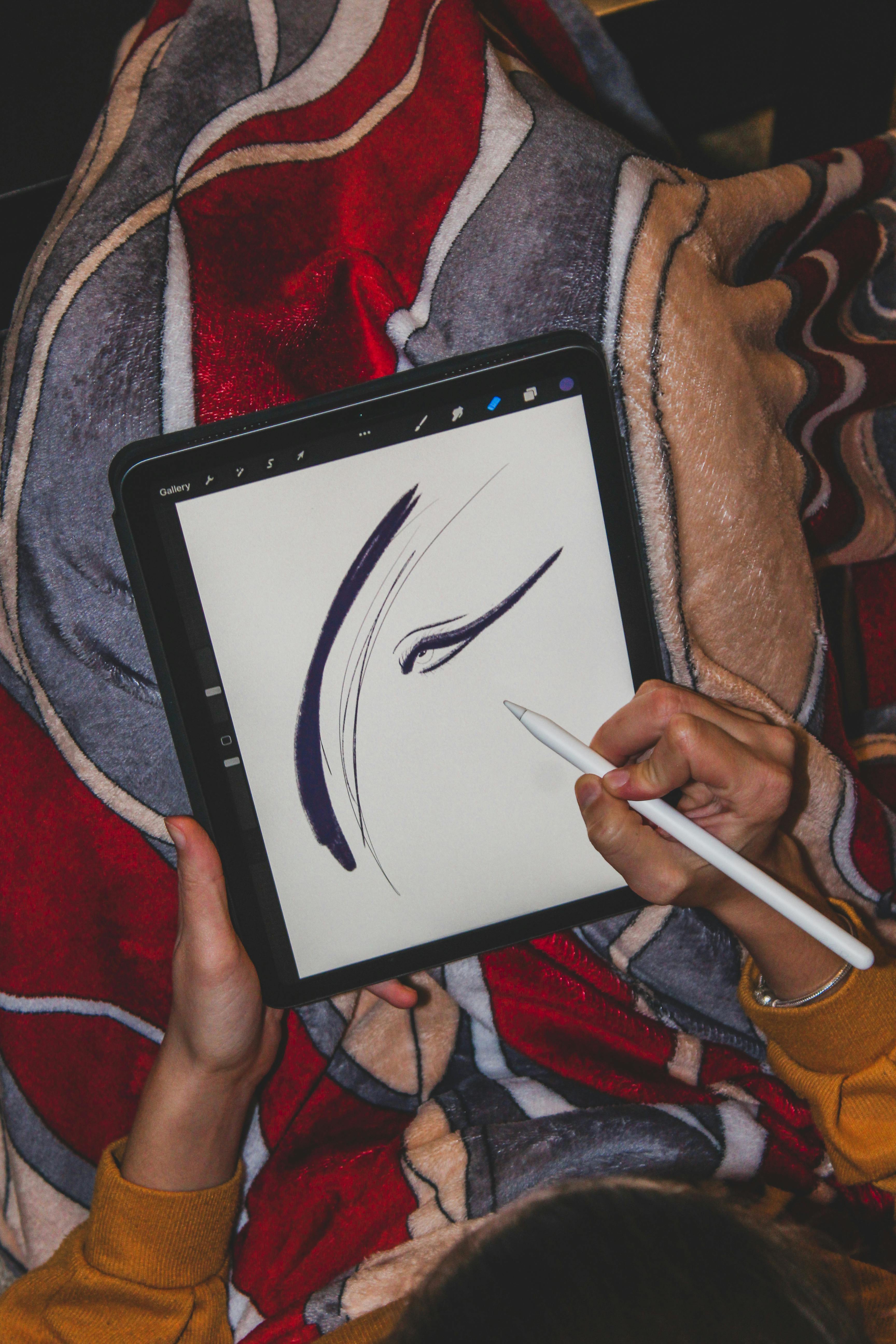
[credit](https://images.pexels.com/photos/11977112/pexels-photo-11977112.jpeg),
[licence](https://creativecommons.org/public-domain/){"alt_en": "Close-up of a rolling cart filled with paintbrushes in metal containers, bottles of paint, and a small painting, representing the tools of art production and the business behind it.", "alt_nl": "Close-up van een roltafel gevuld met penselen in metalen houders, flessen verf en een klein schilderij, wat de productiemiddelen en het zakelijke aspect van kunst vertegenwoordigt."}
[credit](https://www.pexels.com/photo/creative-art-studio-with-brushes-and-paints-29589096/), [licence](https://creativecommons.org/public-domain/)

[credit](https://mastersatart.com/), [licence](https://creativecommons.org/licenses/by-nc/4.0/)
### The Ever-Changing Price Tag: Valuing Art
And then there's value – not just artistic merit, but monetary value. For illustration, value is often tied to market rates for commissions, usage fees, and the perceived commercial impact of the work. A highly effective advertising illustration might command a significant fee due to its potential to drive sales, brand recognition, or engagement. The artist's reputation, style, and track record of successful projects also play a huge role, making some illustrators far more sought after than others. It's a direct reflection of their ability to deliver on a creative brief and resonate with an audience.
Fine art valuation can feel a bit more ethereal, often influenced by the artist's reputation, exhibition history, critical acclaim, provenance (the history of ownership), and even the fickle nature of the art market. It's less about a direct commercial return and more about cultural significance, aesthetic innovation, and personal connection. My own abstract pieces, for instance, aren't tied to a specific brief; their value is wrapped up in the story of their creation and the resonance they find with collectors. This speculative aspect means that a young artist's work might be valued for its potential and emerging voice, while an established master's work holds value for its historical impact, rarity, and enduring cultural significance. It’s a fascinating, sometimes frustrating, dance between objective quality, subjective desire, and market trends, often fueled by critical discourse, academic recognition, and institutional acquisitions. Art investment, too, plays a role, with some collectors viewing art as a tangible asset whose value appreciates over time, much like any other asset, contributing to its status as both a cultural artifact and a financial instrument.
#### Ethical Considerations in the Art Business
And let's be real, the business of art isn't always rosy. Ethical considerations, from fair wages for illustrators to questions of authenticity, restitution of looted art, responsible investment practices, and the environmental impact of art production, are increasingly vital topics. As artists and consumers, understanding these underlying dynamics is crucial for fostering a more equitable and transparent art world. This includes navigating issues like cultural appropriation, ensuring fair representation, addressing the carbon footprint of digital art and exhibitions, and the ethical implications of using AI in art generation. It’s about more than just the pretty picture; it's about the entire ecosystem it exists within, urging us to consider the social responsibilities inherent in creation, consumption, and collection. It's a bit of a gamble, though, isn't it? Like investing in anything truly unique, the market can be unpredictable, but the potential for both financial and aesthetic returns keeps many engaged.

[credit](https://www.pexels.com/photo/creative-art-studio-with-brushes-and-paints-29589096/), [licence](https://creativecommons.org/public-domain/)
***
## Learning the Ropes: Different Paths, Shared Passion
If you're anything like me, you've probably wondered about the different paths artists take. Does an illustrator go to a different school than a fine artist? Sometimes, yes, but often, the core education has a beautiful amount of overlap, driven by that shared passion for creating.
#### Alternative Paths: Workshops, Mentors, and Self-Taught Artists
It's easy to think that if you don't go to a fancy art school, you're somehow not a 'real' artist. But you know what? That's just not true. So many incredible talents have emerged from workshops, apprenticeships, or have been entirely self-taught. The drive to create, the willingness to learn, and the sheer dedication to practice – those are the real teachers. While formal education offers structured learning, mentorship, and invaluable networking opportunities, countless alternative routes exist for honing artistic craft. These include workshops, apprenticeships, artist residencies, and self-directed study through the abundance of online resources, tutorials, and vibrant digital communities. Many prominent artists throughout history have emerged from non-traditional educational backgrounds, emphasizing that sustained practice, critical engagement, and an unwavering drive to create are often more crucial than institutional credentials. I’ve known artists who swear by intensive weekend workshops, and others who credit a single mentor with truly unlocking their potential. The focus remains on finding the path that ignites one's passion and fosters continuous artistic growth. And with the explosion of online courses, tutorials, and communities like ArtStation and DeviantArt, learning art has never been more accessible. You can learn from masters across the globe without ever leaving your studio – a truly amazing development that levels the playing field for so many aspiring artists, cultivating a truly global and diverse artistic ecosystem. It's truly inspiring to see artists carve out their own unique learning journeys, proving that passion and persistence can often be the best educators.
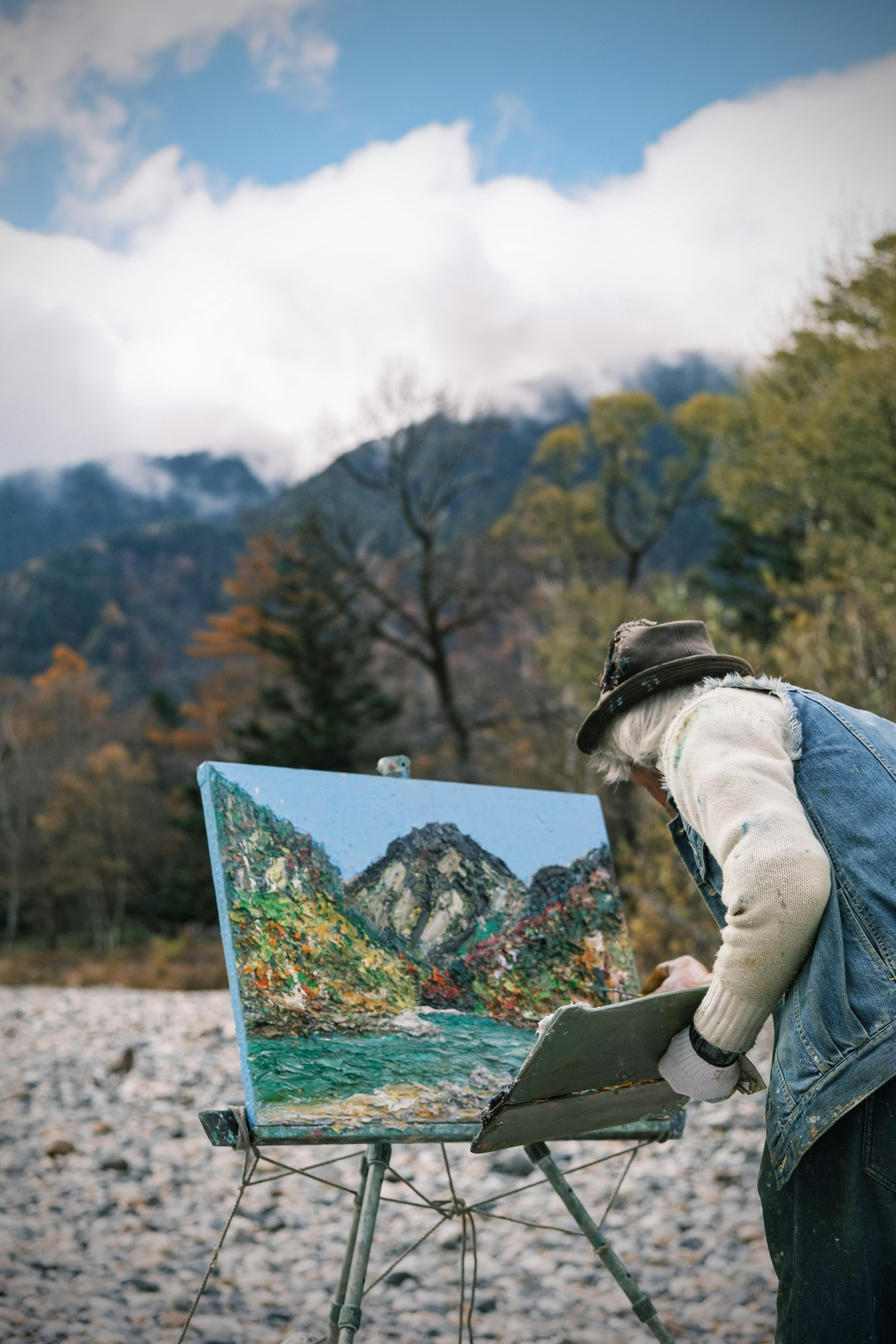
[credit](https://images.pexels.com/photos/18952243/pexels-photo-18952243/free-photo-of-artist-painting-in-mountains.jpeg),
[licence](https://creativecommons.org/public-domain/){"alt_en": "Person drawing a portrait with Prismacolor pencils on a wooden table, symbolizing the dedication to learning and honing artistic skills.", "alt_nl": "Persoon tekent een portret met Prismacolor potloden op een houten tafel, symboliseert de toewijding aan leren en het verfijnen van artistieke vaardigheden."}
[credit](https://images.pexels.com/photos/22690804/pexels-photo-22690804/free-photo-of-person-drawing-with-color-pencils.jpeg), [licence](https://creativecommons.org/public-domain/)
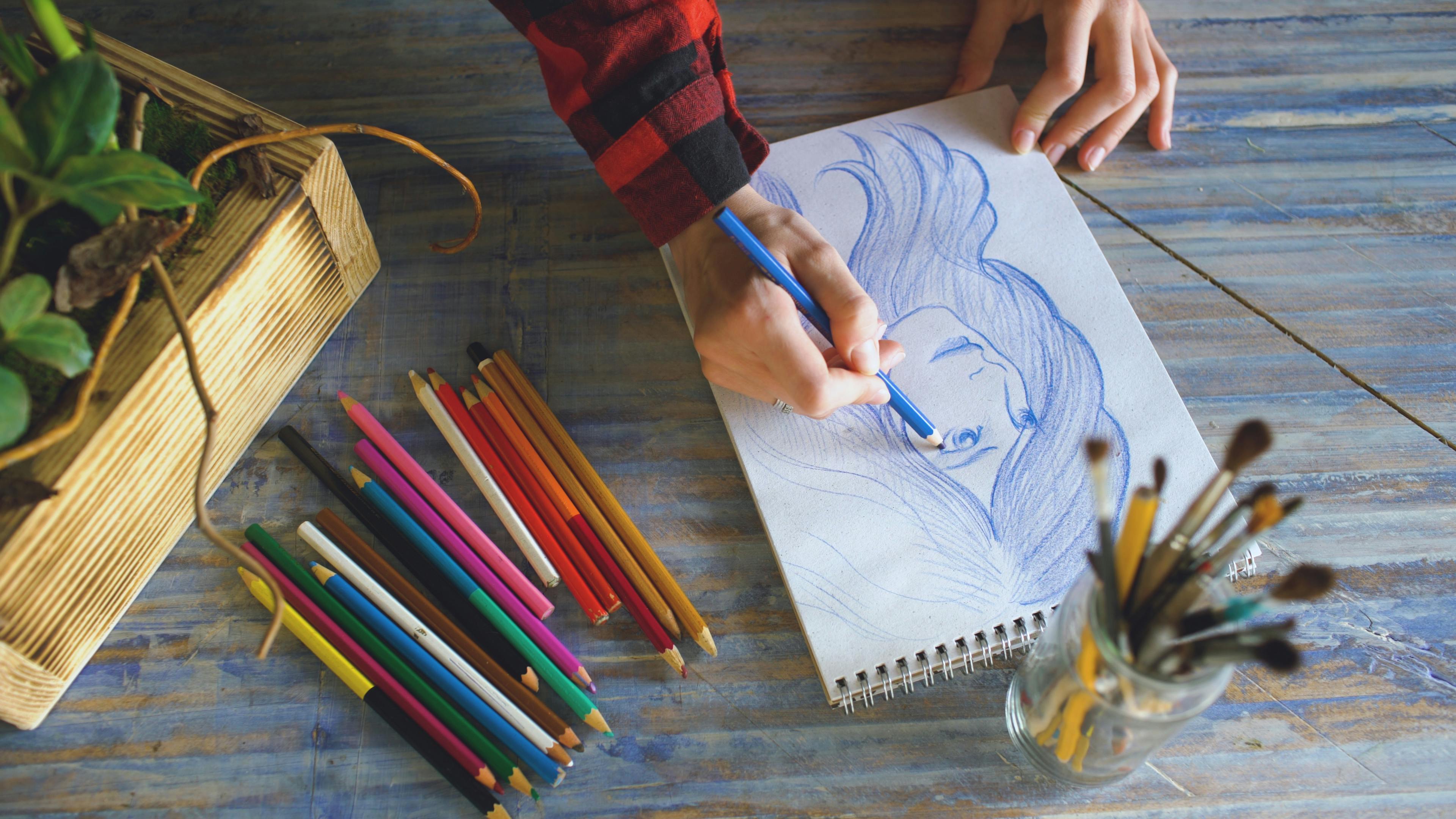
[credit](https://images.pexels.com/photos/22690804/pexels-photo-22690804/free-photo-of-person-drawing-with-color-pencils.jpeg), [licence](https://creativecommons.org/public-domain/)
### Education for the Storytellers
Illustration programs often focus heavily on foundational drawing skills, composition, color theory, and digital proficiency. But beyond that, they delve into the very craft of visual storytelling: narrative structure, character design, sequential art (think comics and graphic novels), and critically, how to understand and respond to client briefs. It's about learning to solve visual problems effectively, communicate a specific message to a target audience, and navigate the commercial demands of the industry. You're learning to be a visual problem-solver, a communicator, and a creative partner. It's a holistic training that goes beyond just making pretty pictures. Crucially, students develop robust portfolios showcasing their unique style and ability to meet diverse client needs across various platforms, from print to digital, motion, and interactive media. This often involves developing proficiency in a range of styles – from editorial and character design to conceptual and technical illustration – to demonstrate versatility. Education often includes courses on professional practice, contract negotiation, and self-promotion, preparing illustrators for the commercial realities of the industry. Mastering visual rhetoric – that is, the art of persuasive visual communication – and understanding how different styles communicate specific messages are also key components, turning illustrators into highly effective visual communicators, capable of tailoring their approach to diverse client needs and audiences. It’s about more than just making something look good; it's about making it *speak*, making it *convince*, and making it resonate deeply with the intended viewer. This means understanding everything from color psychology to compositional dynamics, ensuring every visual choice serves the message. It's a skill that requires both artistic talent and a keen understanding of human perception and psychology.
### Education for the Explorers
Fine art programs, while also building on those essential foundational skills, often emphasize conceptual development, a deep dive into art history, critical theory, and the profound exploration of personal voice and unique artistic processes. There's a lot of encouragement to experiment fearlessly, to push conceptual boundaries, and to really dig deep into *why* you're making what you're making, often without a specific end product in mind. It’s a journey of intense self-discovery, often without a predetermined destination, which I, as an abstract artist, find incredibly liberating and essential for developing a truly authentic vision. You learn to articulate your intentions, critique your own work, and position yourself within the broader art historical conversation. This emphasis on critical self-reflection and the ability to articulate one's artistic philosophy is paramount, as it's often how fine art engages with intellectual and cultural dialogues. Programs often include rigorous studio critiques, art history seminars delving into theory and movements like post-structuralism or phenomenology, and opportunities for independent research and exhibition, fostering a deep understanding of art's role within broader cultural and philosophical contexts. Students are encouraged to develop a distinctive artistic vision and a sophisticated conceptual framework for their practice. Learning to articulate that vision, perhaps through crafting a compelling [the art of the artist statement: crafting your narrative](/finder/page/the-art-of-the-artist-statement-crafting-your-narrative), becomes as important as the act of creation itself. Understanding [the definitive guide to understanding abstraction in contemporary art](/finder/page/the-definitive-guide-to-understanding-abstraction-in-contemporary-art) is also a key part of this journey, as fine art often pushes the boundaries of representation, challenging viewers to engage with non-objective forms and conceptual complexities.
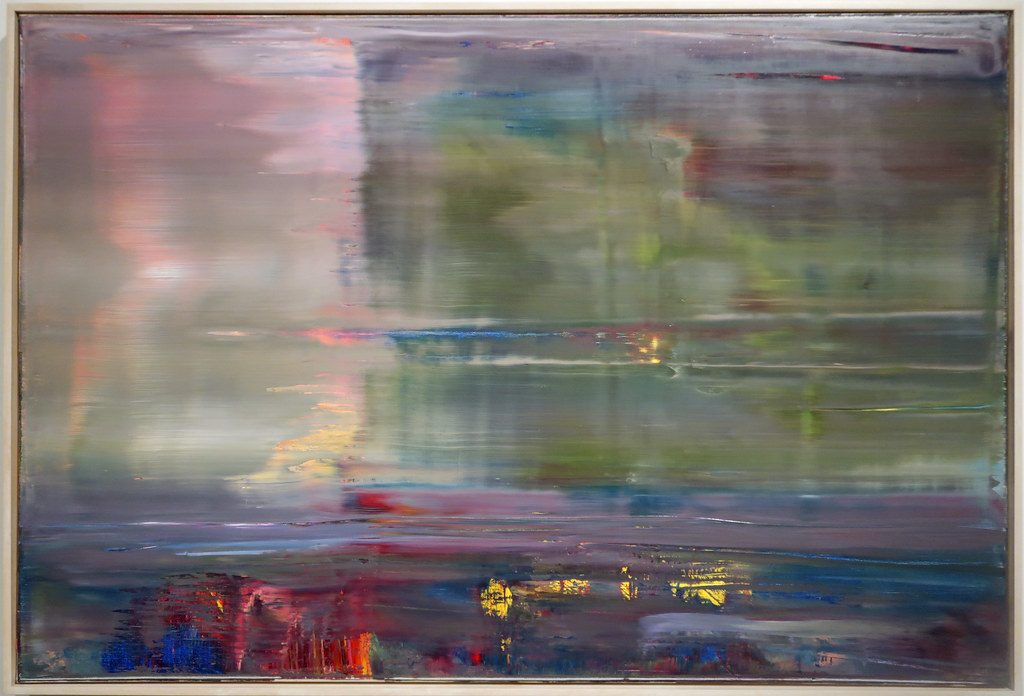
[credit](https://live.staticflickr.com/65535/51907566658_1100dbeb2a_b.jpg), [licence](https://creativecommons.org/licenses/by-nc-sa/2.0/)
#### The Power of Community and Collaboration
Before we talk about making a living, I wanted to pause and mention something vital: community. Whether you're an illustrator or a fine artist, finding your tribe, connecting with other creatives, and collaborating can be a game-changer. I've learned so much from my peers, and sometimes, those collaborations blur the lines between illustration and fine art even further, creating something entirely new and unexpected. It's in these shared spaces, these studios and online forums, that ideas are born, struggles are shared, and artistic growth truly flourishes. No artist is an island, after all. And in the digital age, these 'tribes' often exist online, connecting artists from disparate corners of the world, fostering cross-cultural exchange and unexpected collaborations. It's a beautiful, borderless network of creativity!
## The Business of Art: Making a Living from Your Passion
Ah, the age-old question for any artist: how do you actually make a living doing what you love? The commercial realities for illustrators and fine artists, while both challenging, often diverge quite a bit, reflecting their different purposes.
### The Illustrator's Grind: Commissions and Contracts
Illustrators typically work on a project-by-project basis, earning income through commissions from clients. This could be anything from a book cover to a magazine spread, a video game character, or product packaging. Royalties can sometimes play a role, especially in publishing. It requires a strong portfolio, excellent communication skills, and a good understanding of contracts and deadlines. It’s a hustle, but it can be incredibly rewarding to see your work out in the world, serving a tangible purpose. Networking, robust self-promotion across various platforms (like Instagram, Behance, or your own portfolio website), and securing representation through agents are crucial for illustrators navigating the competitive commercial landscape and ensuring a steady stream of work. Income streams can also diversify through licensing existing artwork, creating stock illustrations, participating in online marketplaces, teaching workshops, developing their own merchandise, or even working as art directors for agencies. Beyond these, illustrators might also find opportunities in **storyboarding for film and advertising**, **creating visual content for educational apps**, or even **designing characters for animated series**. It’s a dynamic field where versatility and an entrepreneurial spirit truly pay off. The business of illustration extends beyond artistic skill to encompass strategic brand building, effective client communication, and astute contract negotiation – it's a full package! This often means illustrators are not just artists, but also entrepreneurs, constantly seeking new avenues for their creative output, adapting to evolving market demands and technological shifts.
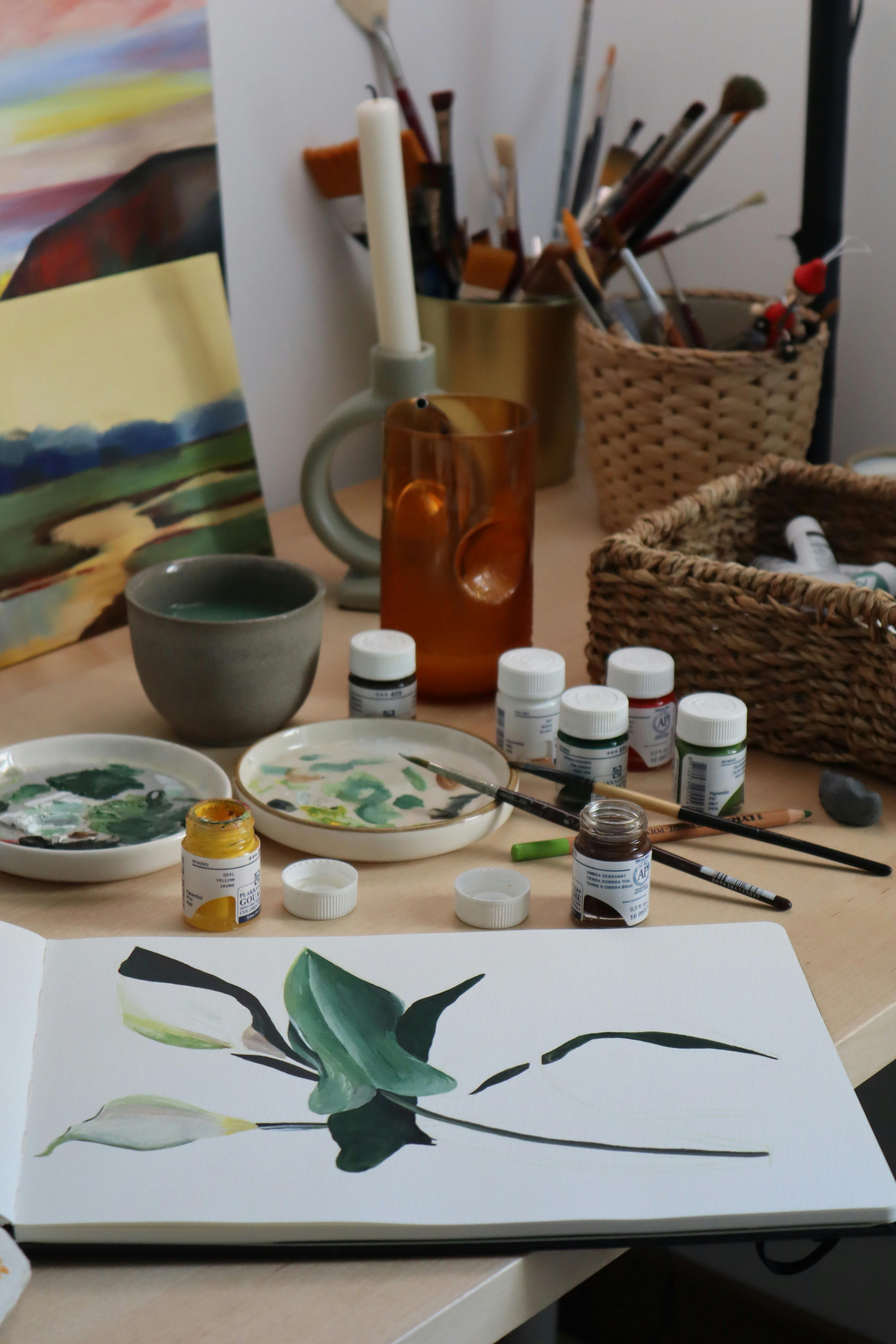
[credit](https://images.pexels.com/photos/27742077/pexels-photo-27742077/free-photo-of-a-painting-is-on-a-table-with-paint-and-brushes.jpeg),
[licence](https://creativecommons.org/public-domain/)
### The Fine Artist's Journey: Galleries and Grants
For fine artists, income often comes from selling original pieces through galleries, art fairs, private collectors, or directly from their studios and online platforms. Pricing can be complex, influenced by reputation, exhibition history, critical reception, market trends, and even the sheer size or medium of the work. Beyond sales, grants, residencies, and awards can provide crucial support, allowing artists the time and resources to focus purely on their creative practice. Applying for grants, which often requires compelling proposals and coherent artistic statements, is almost an art form in itself. Residencies offer invaluable time and space away from daily distractions, providing concentrated creative periods and opportunities for professional development and networking. These competitive opportunities can provide the crucial breathing room necessary for fine artists to push their boundaries and produce their most significant work. It's a path that demands immense perseverance, a distinct artistic vision, and often, a shrewd understanding of marketing and self-promotion. I know, because I've been there, balancing my passion with the very real practicality of making a living – sometimes that means teaching workshops or taking on commissions that lean a bit more towards the illustrative side, just to keep the studio lights on! It's a constant dance between art and commerce, driven by a deep commitment to the work. Additionally, artists may earn income through public art commissions, teaching positions at universities or art schools, lectures or workshops, developing their own art-related products, or even from selling prints and limited editions of their work, contributing to a diverse financial ecosystem that supports their practice. Artist residencies, in particular, can be game-changers, offering dedicated time and space for creative exploration away from daily distractions, often culminating in exhibitions or new bodies of work. I've heard incredible stories from artists who found their true voice during a residency. It's rarely just one thing that keeps the studio lights on, I can tell you that! Sometimes, the key to financial sustainability is a multi-faceted approach, blending various streams of income to support the core creative passion, allowing for greater artistic freedom and longevity. And don't forget the growing trend of **online art sales platforms** and direct-to-consumer models, which empower fine artists to reach a global audience without relying solely on traditional gallery representation. I've seen many friends build thriving careers by directly connecting with their collectors through social media and dedicated websites, which is incredibly inspiring in this increasingly digital world. And speaking of passion, here's a glimpse into the dedication that often fuels an artist's journey:

[credit](https://images.pexels.com/photos/24390314/pexels-photo-24390314/free-photo-of-artist-painting-at-park.jpeg), [licence](https://creativecommons.org/public-domain/)
## Why Does It Matter (To Me, Anyway)?
#### The Role of Curation and Criticism
I've learned that the conversation around art isn't complete without acknowledging the vital roles of curators and critics. For fine art, these figures are often the bridge between the artist's studio and the public's understanding. Curators, through their exhibitions and conceptual frameworks, shape how we encounter and interpret artworks, often placing them in broader historical or thematic contexts. Critics, with their insightful analyses and often impassioned arguments, contribute to the ongoing dialogue, helping to establish an artist's reputation and influence the 'value' – both cultural and monetary – of their work. They're like intellectual guides, helping us navigate the often-complex landscape of artistic meaning. It's a relationship that can sometimes feel daunting for an artist, but it's also undeniably crucial for the development and recognition of significant work.
#### The Evolving Definition of Art: A Personal Takeaway
I guess what it all comes down to for me is this: art is a living, breathing thing. Its definitions are constantly shifting, influenced by technology, culture, and our ever-evolving understanding of ourselves. And that's exactly why these discussions, these explorations into the 'what ifs' and 'how comes' of art, are so important. They keep us open, they keep us curious, and they remind us that the most exciting art often happens right at the edges, where the familiar boundaries start to dissolve. So let's keep challenging those labels, shall we? Because the more we understand the vastness of artistic expression, the more we understand the incredible, boundless creativity that lives within all of us.
So, after all this talk about labels, distinctions, and blurred lines, you might be asking: why bother? For me, understanding the nuances between illustration and fine art isn't about creating rigid boundaries or deciding one is 'better' than the other. Far from it. It's about appreciation, about understanding the vast spectrum of human creativity, and about finding my own place within it all.
When I look at a brilliant illustration, I can admire the cleverness of its communication, the skill with which it tells a story, and its effectiveness in serving a purpose. And when I stand before a powerful piece of fine art, I'm moved by its raw expression, its invitation to introspection, and its courage to exist purely for its own sake. They're different languages, perhaps, but both speak to the human soul in profound ways.
Ultimately, whether I'm sketching an idea for a potential client or pouring my soul onto a canvas in an abstract swirl of color, I'm just an artist. And knowing the different facets of that word – the illustrator, the fine artist, the one who blurs the lines – only deepens my understanding of what I do, and why I love doing it. It helps me embrace the messy, beautiful journey of creativity, wherever it leads. So next time you see a piece of art, instead of immediately labeling it, maybe just ask yourself: what story is it telling, and why was it made? What does it *do* for you? You might be surprised by the answers, and by how much richer your own appreciation becomes. It's a wonderful, lifelong conversation, this art thing, and I'm just happy to be a part of it, in all its glorious forms. It's a journey of continuous learning, really, where every new artwork encountered or created adds another layer to that understanding, constantly expanding our collective human narrative.
## The Societal and Cultural Impact of Art
Beyond personal expression and commercial utility, both illustration and fine art play indispensable roles in shaping society and culture. Illustration, through its pervasive presence in media, can influence public opinion, educate masses on critical issues, and visually articulate cultural narratives, from political cartoons to public health campaigns. Fine art, often operating within more contemplative spaces, frequently challenges dominant ideologies, offers critiques of social structures, and provides avenues for communal healing and reflection. Both forms contribute to the visual literacy of a society, enriching public discourse and fostering a deeper understanding of human experience across diverse contexts. From powerful social commentary in fine art to persuasive public health campaigns conveyed through illustration, art acts as both a mirror and a catalyst for change. It can challenge injustices, preserve cultural heritage, and even offer avenues for collective healing after trauma. Think of protest art throughout history, from Guernica to contemporary street art murals addressing social inequality – these aren't just expressions; they're powerful statements intended to provoke action and shift perspectives. Beyond that, consider how illustrations in textbooks educate future generations, or how public monuments embody collective memory and cultural identity. Art, in all its forms, weaves itself into the very fabric of our societies, influencing our thoughts, shaping our values, and often, giving voice to the voiceless. They are mirrors and shapers of our world, reflecting who we are and influencing who we might become.
---
### **The Future of Art: Converging Ecosystems**
You know, looking back at how much things have changed, I can't help but wonder what the future holds for this beautiful, dynamic world of art. If the past is any indication, it's going to be even more fluid, more interconnected, and even more surprising.
#### Hybrid Practices and Fluid Identities
I truly believe we'll see fewer artists strictly defining themselves as 'illustrators' or 'fine artists.' Instead, we'll see more 'hybrid practitioners' who seamlessly move between commercial projects and personal exhibitions, leveraging skills from both worlds. This fluidity of identity will empower artists to pursue their vision across diverse platforms and contexts, rather than being limited by traditional labels. It's an exciting prospect, allowing for an even richer tapestry of creative expression.
#### AI as a Creative Partner
The conversation around AI in art is only just beginning. Instead of fearing it, I think we'll learn to see AI as a powerful creative partner, helping us generate ideas, explore new aesthetics, or even automate repetitive tasks, freeing us up for the truly conceptual and emotional heavy lifting. It’ll push us to redefine our unique human contributions to the creative process, making us ask even deeper questions about what it means to be an artist. This could mean AI becomes a tool for concept generation, for exploring countless stylistic variations, or even for making art more accessible to individuals with physical limitations by translating thoughts directly into visual output. Imagine an AI that can instantly generate hundreds of variations of a composition, allowing an artist to pick the most compelling starting point. Or a system that helps visually impaired artists translate their internal visions into tangible forms. The possibilities are truly mind-boggling, and I believe we're only just scratching the surface of how AI will redefine artistic creation and expand accessibility in ways we can't even fully grasp yet.
#### The Democratization of Art
With more accessible digital tools, online education, and decentralized platforms like NFTs, the traditional gatekeepers of the art world will continue to evolve. This means more diverse voices, more unexpected talents, and a broader global conversation about art. It's a fantastic thought, isn't it? That art can truly be for everyone, created by everyone, and appreciated by everyone. We're seeing artists from previously marginalized communities gain global recognition through online platforms, fostering a truly inclusive and interconnected art world. This democratization also means a broader audience can engage with and even collect art, moving beyond the traditional elite circles. It's a move away from the often-insular, historically Eurocentric art establishment towards a truly polyphonic global chorus of creative expression, where a street artist from São Paulo can find an audience in Tokyo, or a digital artist from a remote village can collaborate with creators across the globe. This flattening of hierarchies is, for me, one of the most exciting promises of the future of art.
The future of art, whether illustration or fine art, seems to be one of constant evolution, challenging our preconceptions and inviting us to embrace a world where the boundaries are not just blurred, but beautifully, purposefully dissolved. It's a journey I'm incredibly excited to be on! And sometimes, that excitement is about seeing how even the simplest artistic tools, like a humble pencil, can still create profound works in this ever-evolving landscape.
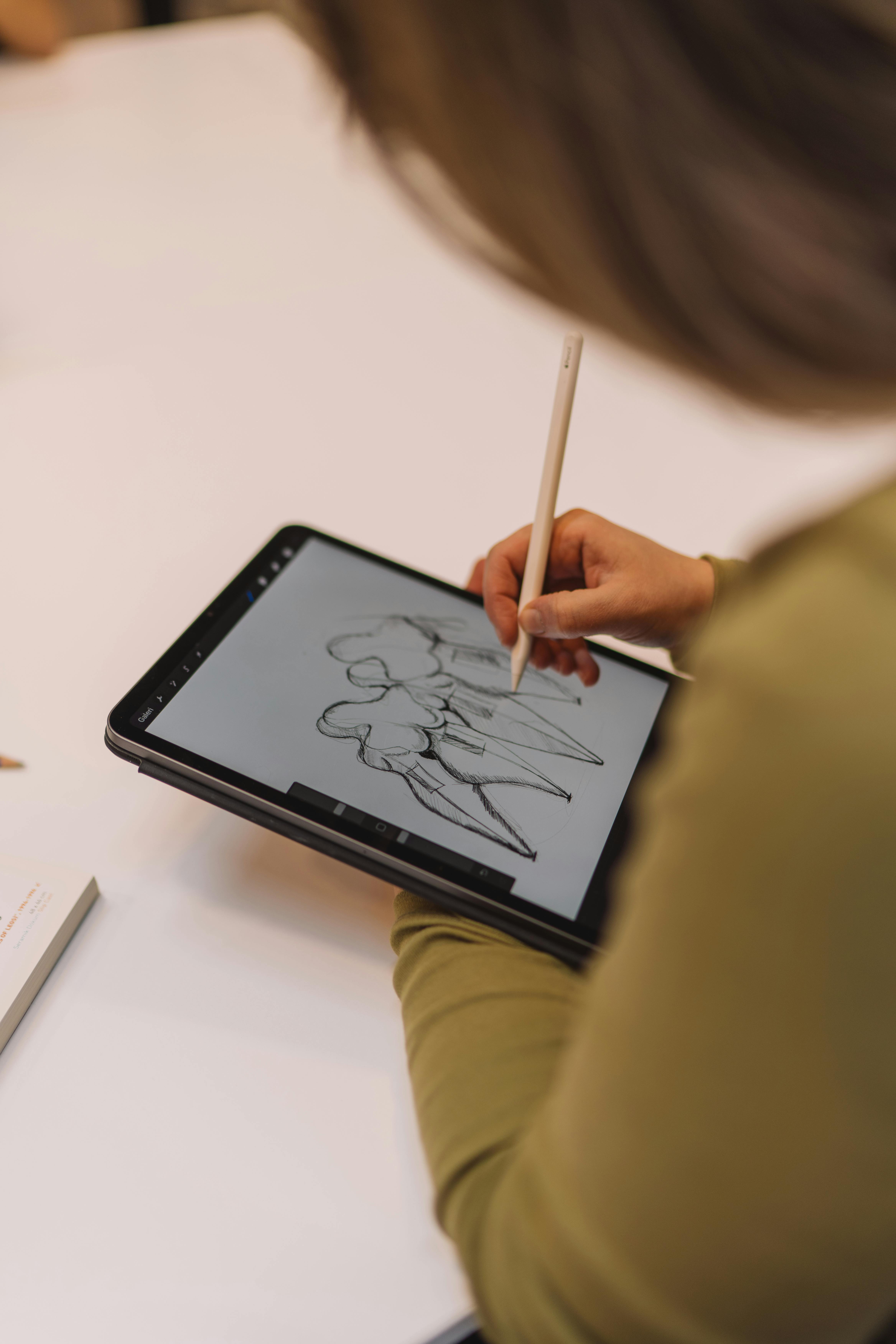
[credit](https://images.pexels.com/photos/20515573/pexels-photo-20515573/free-photo-of-woman-sketching-in-drawing-tablet.jpeg), [licence](https://creativecommons.org/public-domain/)




